










NCAD FIELD as ‘taskscape’, Hempcrete structure by Helen McLoughlin; photograph © and courtesy Gareth Kennedy.
6. Roundup. Exhibitions and events from the past two months.
8. News. The latest developments in the arts sector.




9. Notes on Grammar. Joanne Laws outlines the conversation surrounding gender-neutral pronouns. Reading Time and Infrastructure. Christa-Maria Lerm Hayes reflects on Brian O’Doherty’s social practice legacy.
10. The Heavenly Order of Humble Materials. Cornelius Browne considers the salvaged and the handmade. Molecular Revolutions. Shannon Carroll discusses her recent curatorial projects including a show at The LAB Gallery.
11. Fully Whole. Iarlaith Ní Fheorais responds to Holly Márie Parnell’s latest film, made with her brother David. Grief Weaving. Donegal-based artist Emily Waszak considers recent developments in her textile practice.
In Focus: Field Work
12. Drawn With Nature. Lisa Fingleton, VAI Member Glossaries for Forwardness. Marie Farrington, VAI Member
13. Holdings. Belinda Quirke, Director of Solstice Arts Centre
14. The Green Cube. Sandra Murphy, IMMA Biodiversity Tours Tracing a Lightning Path. James Kelly, VAI Member
15. Living Sculptures. Katerina Gribkoff, VAI Member
16. NCAD Field. Gareth Kennedy, Artist and Lecturer
17. Sustainment Feasts. Deirdre O’Mahony, VAI Member
Seminar
18. Collective Space. Sarah Long reports from Cobh in Cork on the SIRIUS Summer School 2023 programme.
19. Dragana Jurišić, Hi, Vis 3 from the series ‘Hi-Vis (2020-21); photograph © the artist, courtesy of Crawford Art Gallery.
20. Sarah Pierce at IMMA
21. ‘Bodywork’ at Crawford Art Gallery
22. Ellen Harvey at Butler Gallery

23. Dorje de Burgh at South Tipperary Arts Centre
24. Roseanne Lynch at Photo Museum Ireland
26. Say What You See. Ian Wieczorek outlines his involvement in organising a retrospective of the art of Gus Lynott. Loading Bay. Frank Wasser discusses a new project for artists’ writing commissioned by the National Sculpture Factory.
27. History of the Present. Eoin Dara interviews Maria Fusco about her new opera-film about Belfast, class, and conflict.
28. Post-extractivist Landscapes. Judy Carroll Deeley discusses her collaboration with UCD Humanities Institute.
Exhibition Profile
29. Aftermath: Perpetrator Trauma. Mary Flanagan considers Dominic Thorpe’s exhibition at the Linenhall Arts Centre.
30. This Rural. Selina Guinness reviews a recent exhibition at Lismore Castle Arts focusing on photographic practices.

32. Shelter. Anne Hodge discusses an exhibition by the Shell/Ter Artist Collective at the National Gallery of Ireland.
34. Extinction Beckons. Frank Wasser reviews Mike Nelson’s recent survey exhibition at the Hayward Gallery in London.

35. Twilight Zone. Alannah Robins outlines the involvement of Interface at Supermarket Art Fair in Stockholm.
36. The Grammar of Clouds. Martin Finnin discusses the evolution of his painting practice.
37. Expanded Painting. Amy Higgins outlines the development of her artistic practice.
The Visual Artists’ News Sheet:
Editor: Joanne Laws
Production/Design: Thomas Pool
News/Opportunities: Thomas Pool, Mary McGrath
Proofreading: Paul Dunne
Visual Artists Ireland:





CEO/Director: Noel Kelly
Office Manager: Grazyna Rzanek
Advocacy & Advice: Elke Westen
Advocacy & Advice NI: Brian Kielt
Membership & Projects: Mary McGrath
Services Design & Delivery: Alf Desire, Emer Ferran
News Provision: Thomas Pool
Publications: Joanne Laws
Accounts: Grazyna Rzanek
Board of Directors:
Michael Corrigan (Chair), Michael Fitzpatrick, Richard Forrest, Paul Moore, Mary-Ruth Walsh, Cliodhna Ní Anluain (Secretary), Ben Readman, Gaby Smyth, Gina O’Kelly, Maeve Jennings, Deirdre O’Mahony.
Republic of Ireland Office
Visual Artists Ireland
The Masonry
151, 156 Thomas Street
Usher’s Island, Dublin 8
T: +353 (0)1 672 9488
E: info@visualartists.ie
W: visualartists.ie
Northern Ireland Office
Visual Artists Ireland
109 Royal Avenue Belfast
BT1 1FF
T: +44 (0)28 958 70361
E: info@visualartists-ni.org
W: visualartists-ni.org
MA: ART & PROCESS is an intensive and stimulating taught

Masters in Fine Art that is delivered over three semesters through the calendar year from end of January to December.
Each semester focuses on a different function of the course:
• CRITIQUE
• RESEARCH
• PRESENTATION
MA:AP offers innovative approaches to learning, individual studio spaces, access to college workshops and facilities, professional experience through collaborative projects, peer-to-peer exchange and a bespoke visitor lecture series.
Now taking applications for start January 2024
MTU Crawford College of Art & Design
Cork Ireland
Information and online application details: https://crawford.cit.ie/ courses/art-and-process/ ccad.enquiriescork@mtu.ie 00 353 021 4335200

12.08.23–08.10.23
Opening Sat Aug 12 (16.00–18.00)
Including works by: Josh Begley / Charles Brady / Paul Carroll

17–30 July 2023
Vincent Cianni / Michael Craig-Martin / Dorothy Cross / Vanessa Daws
Rineke Dijkstras / Andy Fitz / Jona Frank / Marcus Harvey
Nicolai Howalt / Nevan Lahart / Louis le Brocquy / Jeannette Lowe
Colm MacAthlaoich / Colin Martin / Fearghus Ó Conchúir
Kenneth O’Halloran / Mandy O’Neill / Tony O’Shea / Julian Opie
Martin Parr / Paul Pfeiffer / Luis Alberto Rodriguez / Amelia Stein
Sarah Walker / Elinor Wiltshire
Julian Opie Running women., 2016Fingal County Council Arts Office in partnership with Graphic Studio Dublin are offering two Fine Art Print Residencies for professional artists at any stage of their career, working in any discipline, who are interested in exploring print processes.
The two-week long residencies will provide an ideal environment for the development of a creative project in printmaking, working with a master printer.
To be eligible to apply, applicants must have been born, studied or currently reside in Fingal.
Closing date for receipt of applications: Thursday 27th July 2023 at 4.00pm
Visit www.graphicstudiodublin.com to download an application form.
For further information please contact Graphic Studio Dublin by email at info@graphicstudiodublin.com
www.fingalarts.ie
www.fingal.ie/arts
Fingal County Council Arts Office in partnership with the RHA are offering an opportunity of a funded studio space for a professional artist for a period of one year, commencing in September 2023. The award is open to practising artists at all stages in their professional careers working in visual art.
The award offers an artist the opportunity to develop their practice within the institutional framework of the RHA and covers the cost of studio rental and administration.

To be eligible to apply, applicants must have been born, studied or currently reside in Fingal.
Closing date for receipt of applications: Monday 24th July 2023 at 4.00pm
Visit www.rhagallery.ie to complete an application form.
For further information please contact the RHA by email at annie@rhagallery.ie
www.fingalarts.ie
www.fingal.ie/arts

 Fingal, A Place for Art
Fingal, A Place for Art
The Arts Council’s Artist in the Community (AIC) Scheme, managed by Create, offers awards to enable artists and communities to work together on researching, developing, and delivering projects.


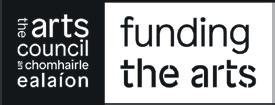

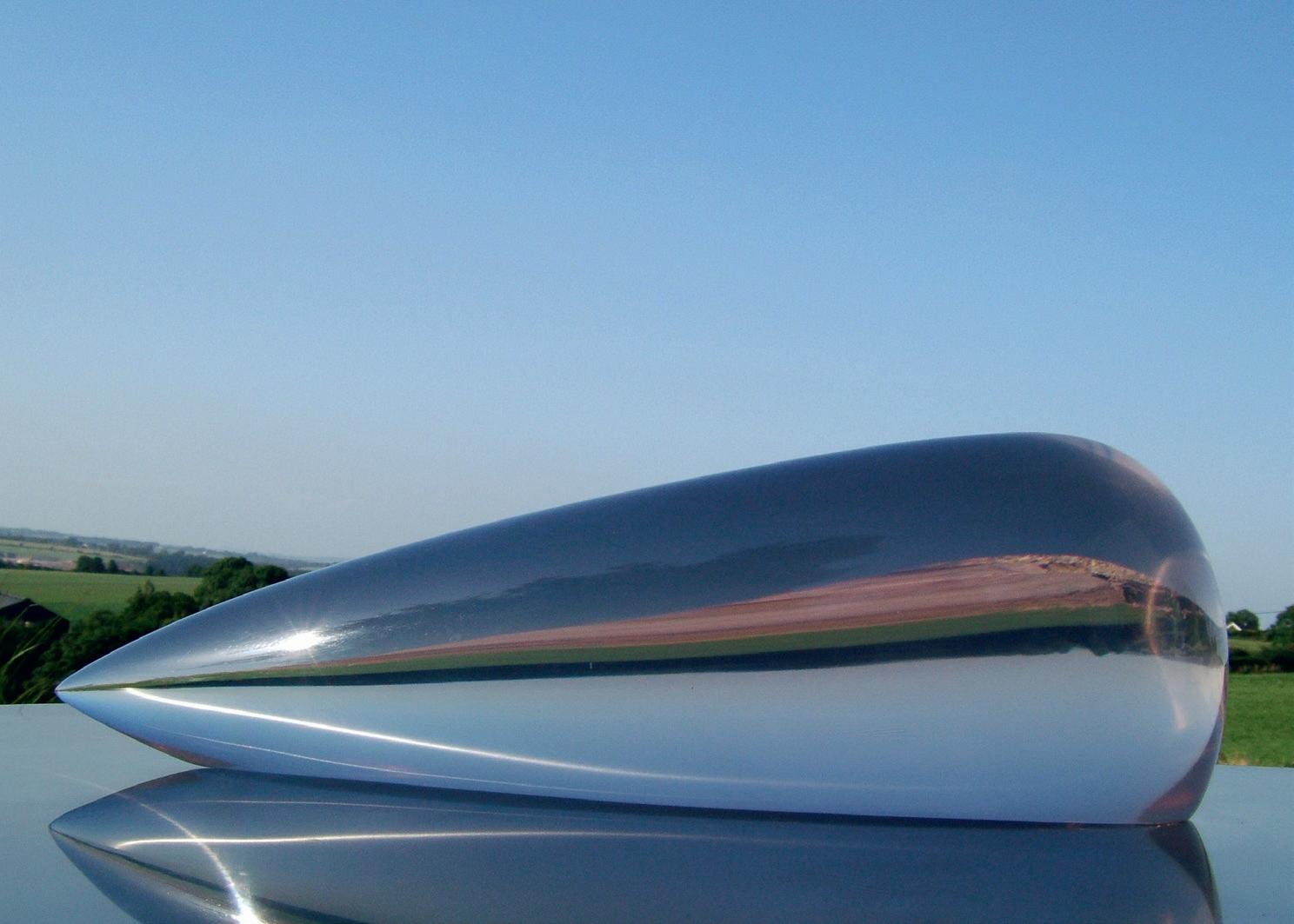
Closing Dates
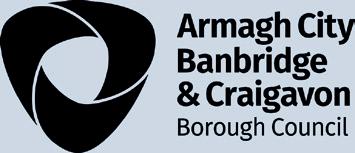
Round One: 27 March, 2023

Round Two: 25 September, 2023
www.create-ireland.ie
Dublin
Douglas Hyde Gallery

The Douglas Hyde Gallery presented the first institutional exhibition in Ireland by renowned artist Uri Aran. Titled ‘Take This Dog For Example’, Aran’s exhibition was on display from 31 March to 25 June. In ‘Take This Dog For Example’, materials and the language of learning trace through multi-faceted works, from Sesame Street’s Ernie (without his Bert) and study desks, to blackboards, slide projectors and projection stands, alongside a library of composed letters.
thedouglashyde.ie
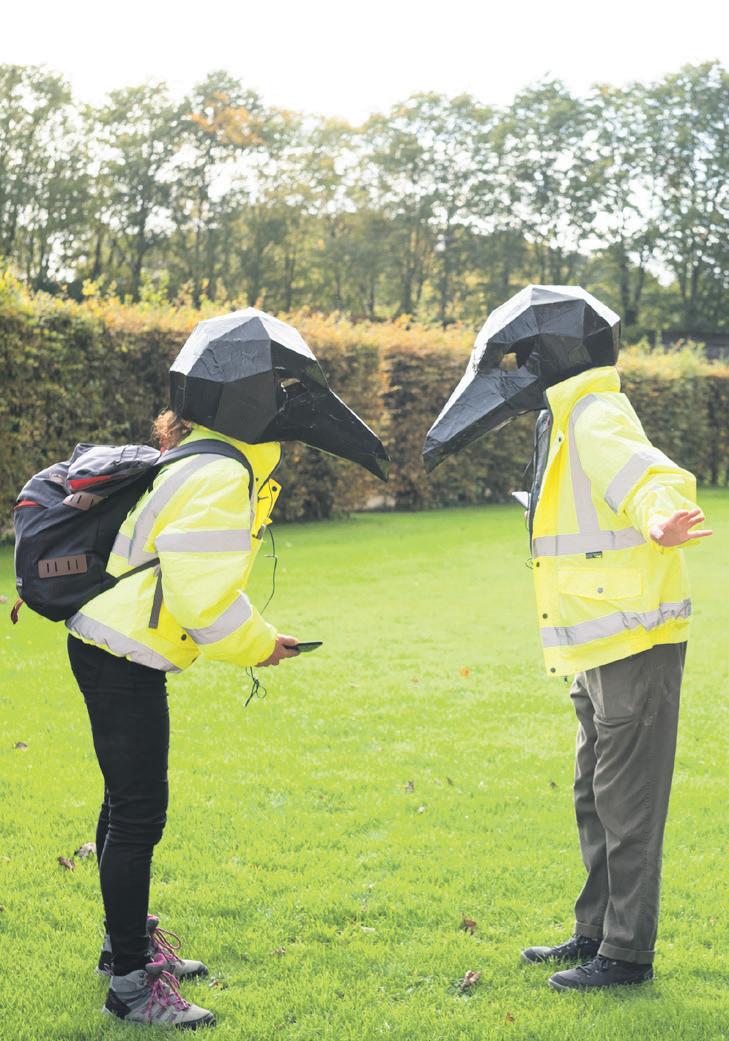
Kerlin Gallery
Kerlin Gallery presented ‘Repeating Song’, an exhibition of new work by Aleana Egan, from 14 April to 27 May. Across painting and sculptural arrangements, the works in ‘Repeating Song’ foster an ambient space in which to convey sensations through looking. Traces of interactions and experience are harvested and expressed through material objects, colour, and form, presenting a rhythmic installation rooted in the blending of inchoate interior visions and sources from the world at large.
kerlingallery.com

SO Fine Art Editions
‘Dreams of Reality’ by Yoko Akino was on display from 6 May to 3 June at SO Fine Art Editions. The fine art prints in this exhibition reflected the influence of the world around Akino, lived experiences and feelings of wonder for nature and all that life offers. The physical landscape of mountains and islands seem unchangeable, as if they have been there forever, yet their contours and colours are altered constantly by passing clouds and rain showers that appear and disappear in unfolding dramas.
sofinearteditions.com
IMMA
IMMA presented ‘Irish Gothic’, a major retrospective exhibition by one of Ireland’s most accomplished and respected artists, Patricia Hurl, from 10 February to 21 May. Hurl’s work is of its nature, political and traverses the disciplines of painting, multi-media and collaborative art practice. The exhibition was the first major exhibition of Hurl’s work spanning more than 40 years and features over 70 of the artist’s paintings and drawings.
imma.ie
Rua Red
From 5 to 16 May, NCAD MFA students presented ‘Bigger Than Us’, which aimed to demystify the creative process and transcend the boundaries of difference. Individual endeavours took on a life of their own and exceeded the walls of the studio to allow insight into the chaos and uncertainty that corrals our contemporary and artistic experience. With works by Walker Shaw, Tallon McGinn, Fiona Somers, Marco Di Sante, Stephanie Rowe, Katie Whyte, Irina Mc Auley, Tammy Quane, Kate Hynes, Evan Dow, Justyna Doherty and Mia Shattock. ruared.ie
The LAB Gallery ‘Molecular Revolutions’ (30 March – 27 May) was curated by ARC LAB Curatorial Scholar, Shannon Carroll. ‘Molecular Revolutions’ was a multi-disciplinary group show presenting work by Bassam Al-Sabah, Mark Clare, Clodagh Emoe, Jennifer Mehigan, Erin Redmond, Rosie O’Reilly and Trevor Woods. Inspired by the French Philosopher and life-long eco-activist Félix Guattari, and his concept of molecular revolutions, this exhibition aimed to draw attention to our relationship with the natural world, one that has for so long been marked by disproportion.
dublincityartsoffice.ie
At Cathedral Quarter Arts Festival (27 April – 7 May), Dan Shipsides presented ha ha – syzygetically speaking, 2023 – a public artwork, deployed throughout the Cathedral Quarter area, featuring twinned flags that play with and celebrate the expanding communicative beauty and potential of the spaces between laughter and language. Shipsides’s photographic series, Summit Stammers – ha ha (Bearnagh), which documents the flags installed in another location, was also exhibited in the Black Box.
cqaf.com
Golden Thread Gallery
Golden Thread Gallery hosted Irish artist Niamh O’Malley after the hugely successful national tour of ‘Gather’, Ireland at Venice 2022. ‘Gather’ was the national representation of Ireland at the 59th International Art Exhibition of La Biennale di Venezia, curated by Temple Bar Gallery + Studios. The solo exhibition at Golden Thread Gallery, titled ‘Gather Belfast’, was informed by O’Malley’s work for ‘Gather’ while also exploring the breadth of her current practice. The exhibition ran from 29 April to 24 June.
goldenthreadgallery.co.uk
The MAC
On display from 7 April to 2 July, ‘At The Table’ brought socially and politically engaged practices into The MAC’s core gallery programming. It is the museum’s first major exhibition developed from MACtivate, the work they do with their five Associate Partners – The Rainbow Project, Participation and the Practice of Rights, Alliance for Choice, Action Mental Health and Extern. ‘At The Table’ aims to challenge who is and isn’t invited to ‘the table’ where decisions that determine our lives are made.
themaclive.com
The photographs in Lane Shipsey’s first solo show ‘ABHAILE | HOMING’ take an idiosyncratic, personal, and sometimes humorous look at home, homing, and ways we think about home. What do we mean when we say we feel at home? How do we feel when the place we live in could easily be someplace else? And when we wake not knowing where we are? These questions are posed in Shipsey’s photographs, made on a journey to find home. On display 1 June to 27 July.
culturlann.ie
‘FAKE BODY’ refers to a TikTok hashtag used to trick algorithmic moderators in order to avoid videos becoming flagged for containing partial nudity. The need to circumvent the automation and commodification of desires and personas through networked technologies is a shared concern for artists Lana May Fleming and Luke van Gelderen. Their work contrasts contemporary masculine identities, celebrity culture, and the modified female body with the pressure of unattainable perfection. On display 13 to 27 May.
platformartsbelfast.com
QSS Belfast presented ‘Future Works’, a collection of curated work from participants in the recently established HND in Product Design with Ceramics, a two-year full-time course in Belfast Metropolitan College. At the latest COP Climate Change Summit, world governments further committed to achieving ‘net zero’ carbon emissions. Each of us, as individuals and members of communities, has a part to play in changing our own behaviours. As creative practitioners we may also play a role in influencing the behaviour of others. On display from 4 to 25 May.
queenstreetstudios.net
36 Gallery presented ‘Openness’, a solo show by Irish artist Noel Hensey, from 9 to 18 June. The exhibition had two main elements: a large site-specific sculpture, inspired by the visual humour of the 1980s American television series, Police Squad! (1982); and a video work concerned with emotional openness. Hensey’s objective was to show that openness isn’t just the act of disclosing something personal; rather it’s about the all-inclusive spaces that can open up. Supported by the Arts Council of Ireland and Culture Ireland.
36limestreet.co.uk
‘A Sphere Of Water Orbiting A Star’ features significant new work by the Turner Prize-nominated The Otolith Group, co-commissioned by Galway Arts Centre and Hangar Artistic Research Centre, Lisbon. The exhibition features unreleased recordings of conversations between Gerald Donald of Detroit Techno duo Drexciya and Kodwo Eshun, along with films made in Galway at the mouth of the River Corrib as it enters the Atlantic Ocean. On display 13 May to 1 July.
galwayartscentre.ie
‘PORTALS’ was a group exhibition that delved into playful dreamscapes and journeys across fictional realms. The artists featured in this exhibition offered pathways into speculative fictions and alternate worlds. ‘PORTALS’ embraced the potentiality of technology, fantasy, and the unconscious mind in providing us with portals of escape. The exhibition incorporated newly commissioned and existing works including a site-specific outdoor sculptural installation by artist Daire O’Shea. On display 29 April to 22 June.
athloneartsandtourism.ie
Crawford Art Gallery
Anna Furse’s ‘muscle: a question of power’ is an immersive experience that takes visitors on an audio-guided journey through Crawford’s Canova Casts collection and culminates with a new video work exploring the muscularity of professional women. The exhibition engages with society’s contemporary obsessions with beauty and perfection, strength and power. It raises specific awareness of women and muscle, and how the ‘weaker sex’ gains agency through the acquisition of physical strength. On display 28 April to 20 August. crawfordartgallery.ie
The Glucksman
‘Hollow Earth: Art, Caves and The Subterranean Imaginary’ is a group exhibition that brings together a wide range of responses to the image and idea of the cave. It includes painting, photography, sculpture, sound, installation and video, as well as archives and architectural models, alongside works from the eighteenth and nineteenth centuries. Featuring works by contemporary artists and collectives, ‘Hollow Earth’ descends into the depths to explore questions of prehistory and myth, ritual and the future. On display 10 April to 9 July.
glucksman.org
In Hanne Nielsen and Birgit Johnsen’s exhibition ‘Particles’, they perform as birdlike figures beamed down from somewhere in the universe. Together, they wander through Tarkovsky-inspired scenes. Drones are deployed to provide the vertical perspective they need to travel through time and space, unfolding a machine-vision, flying in abrupt movements, watching, searching, monitoring, and disappearing into the sky. On display from 28 April to 24 June.
ormstonhouse.com
‘Breath Variations’ by Christopher Steenson used sound, video, and transmission-based methodologies. ‘Breath Variations’ aimed to explore the materiality of time, its permanence and evanescence. By manipulating and extending the sonic dimensions of Flat Time House, Steenson investigated the capacity of breath as a ‘least event’–Latham’s term for the shortest departure from a state of nothingness – to punctuate linearities of time and space. On display 12 to 14 May.
flattimeho.org.uk
Rachel Parry and Cormac Boydell showed ‘Drawings on paper and ceramics’ at Grilse Gallery, Killorglin, between 1 April and 7 May. Parry and Boydell have been making art of a very high order for decades. Parry is primarily known for her intricate and haunting assemblages of ‘nature’s debris’; Boydell for his unique ceramics which are often a development from his notebook sketches. For the exhibition Parry showed a series of large-scale drawings of the human senses, while Boydell presented a selection of his many travel notebooks and drawings. grilse.ie
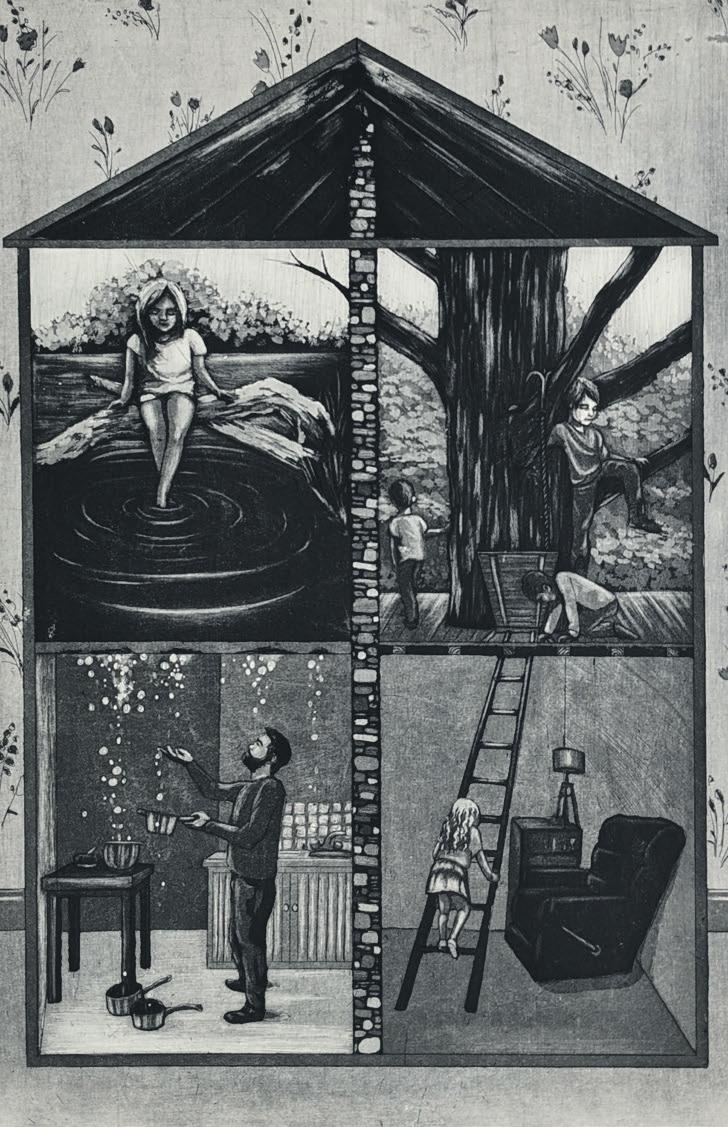
The inexpressibly precious and fast-diminishing craft of building wooden boats was celebrated in an exhibition of photographs by West Cork-based photographer, Kevin O’Farrell. ‘Hegarty’s Boatyard: Last Surviving Traditional Wooden Boatyard in Ireland’ ran from 13 May to 10 June at Uillinn: West Cork Arts Centre. Over the past 25 years, O’Farrell has created a body of work focused on three generations of the same family working in Hegarty’s Boatyard, Oldcourt, Skibbereen, County Cork.

westcorkartscentre.com
The F.E. McWilliam Gallery presented ‘Catherine McWilliams: Selected Work 1961 – 2021’ from 4 February to 3 June. For over six decades, McWilliams produced original and compelling images of life in Northern Ireland. Her work ranges from the domestic to the surreal and prioritises the experiences of women and children. McWilliams lives in North Belfast, in the shadow of Cavehill, and taught in a local secondary school during the worst years of the conflict.
visitarmagh.com
Lavit Gallery
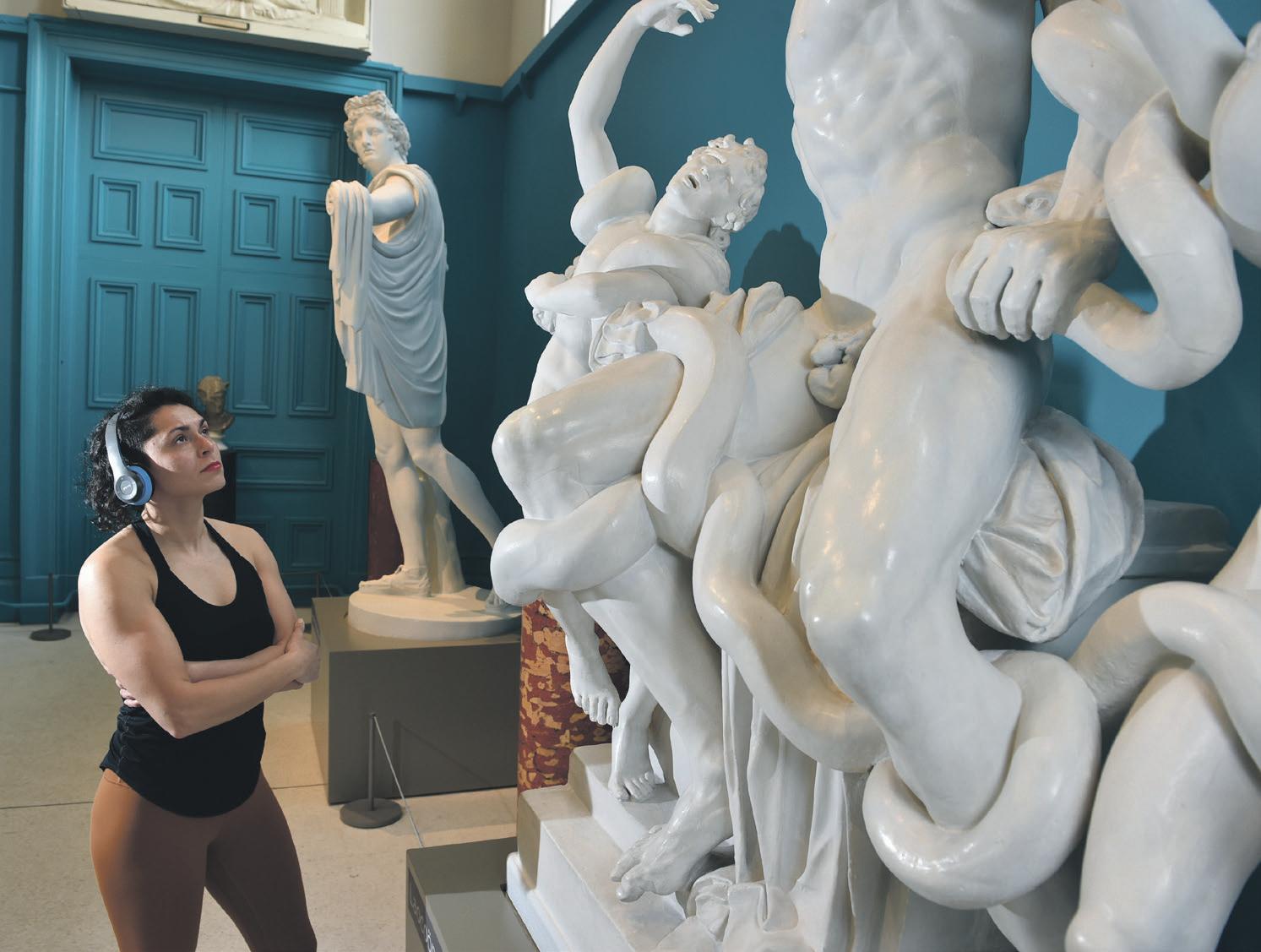
‘Cork Printmakers Members Exhibition’ at Lavit Gallery featured new work by members of Cork Printmakers. The exhibition celebrated the diverse practices and approaches to fine art printmaking. With over 100 members, Cork Printmakers artists work across traditional and contemporary fine art printmaking techniques, including lithography, etching, screen-printing, and relief printing, as well as expanded print practice, which incorporates video, sculpture, and installation. On display 18 May to 10 June.
lavitgallery.com
‘Re_sett_ing_s’, a collaborative exhibition between Locky Morris and Jaki Irvine, was expanded upon with new filmic, digital and sound elements for Void Gallery and beyond. The artists were approached separately by Mark O’ Gorman, speculating on ‘hidden connections’. Unbeknownst to him, they had a close friend in common, the artist Anne Tallentire, whose Setting Out 3 (2021), with its yellow builder’s string and hints at musicality, acted as a touchstone for the development of the work. On display 4 March to 3 June.
derryvoid.com
Minister for Tourism, Culture, Arts, Gaeltacht, Sport and Media, Catherine Martin TD, and Dr Caroline Campbell, Director of the National Gallery of Ireland (NGI), unveiled Ireland’s first public Cézanne painting (the National Gallery owns a drawing by the artist, acquired in 1954). The painting, La Vie des Champs, was created between 1876 and 1877 upon the artist’s return to Provence, in southern France, from Paris.
Translating to “Life in the Fields”, the oil painting depicts an imaginary, idyllic scene inspired by the country life of Cézanne’s native Provence. The painting, made when Cézanne returned to Impressionism, offers a window into the evolution of the artist’s career with his employment of a lighter colour palette and sensational

IMMA (Irish Museum of Modern Art), Hugh Lane Gallery, and Culture Ireland are delighted to announce a new threeyear pilot named ‘IRELAND INVITES’, aimed at showcasing Irish visual art to the international biennale circuit.
IRELAND INVITES seeks to enhance international exposure for Irish visual artists by hosting biennale curators to undertake visits to studio and art institutions in Ireland. During their visit, curators will have the opportunity to enhance their understanding of contemporary art practices in Ireland, availing of the curatorial expertise of IMMA, Hugh Lane Gallery and Culture Ireland, who will facilitate research and create bespoke hosted trips for each visiting curator.
Commenting on the new initiative, Annie Fletcher, Director, IMMA, Barbara Dawson, Director Hugh Lane Gallery and Sharon Barry, Director Culture Ireland said: “An analysis of biennales over the last 20 years shows an opportunity to develop the representation of Irish visual artists internationally and IRELAND INVITES seeks to address this in a joint initiative between IMMA, Hugh Lane Gallery and Culture Ireland. Over the next three years, we look forward to welcoming curators from around the world to see the very best Ireland has to offer in terms of visual arts.”
Inti Guerrero, Artistic Director of the Sydney Biennale, 2024 is the first visiting curator as part of IRELAND INVITES. Later in the Summer, Miguel A. López and Dominique Fontaine, co-curators of the Toronto Biennale, 2024 will also visit Ireland to coincide with EVA International showcase taking place in Limerick. Further curator visits will be confirmed later in the year.
New Director at Void Gallery
Void Gallery in Derry is delighted to announce the appointment of Viviana Checchia as Director. Viviana Checchia is a curator, programmer, and researcher active internationally and joins Void Gallery from her recent roles as Residency Curator at Delfina Foundation, London, and Senior Lecturer on the MFA at HDK-Valand, University of Gothenburg.
brush strokes that are characteristic of his later, more famous works.
Originally owned by Cézanne’s renowned Parisian art dealer, Ambroise Vollard (1866-1939), this marks the first public display of La Vie des Champs since 1996, when it featured in a touring exhibition at the Philadelphia Museum of Art.
It is hoped by the NGI as well as the Department that the acquisition will help in the Gallery’s recovery from the Covid lockdowns, and serve as a beacon of creativity and expression in Ireland. The painting is on display in the National Gallery’s Millennium Wing, Rooms 1-5, as part of the national collection and is open, free of charge, to the public.
Viviana brings with her long-standing experience as Co-Director of ‘Vessel’, an international curatorial platform based in Puglia, South of Italy, for the support of social, cultural, and economic development through and with contemporary art. Previous to these roles she was Public Engagement Curator at the Centre for Contemporary Arts, Glasgow, and has produced and contributed to a range of international projects, including the Young Artist of the Year Award, Ramallah, and the 4th Athens Biennale.
Welcoming the appointment, Void Board member and Curator at IMMA Ireland, Seán Kissane, said: “The Board of Void is delighted to welcome Viviana as the new Director. She has a fantastic record of achievement in many fields, including the co-founding of ‘Vessel’ with its focus on socially engaged practice, public programming, commissioning, and writing. Viviana has set out a very exciting vision for Void, and we eagerly anticipate seeing how this will evolve and develop in the coming years. The Board would like to sincerely thank the outgoing Director, Mary Cremin, for her extraordinary work at Void. Among the highlights were Helen Cammock’s winning of the Turner Prize; bringing Eva Rothschild to the Venice Biennale; and moving the gallery to its new home in Waterloo Place. We wish her the very best with her future endeavours.”
Responding to her appointment, Viviana said: “I am really looking forward very much to taking on my new role at Void and to working with the team and the board. Art and its relationship with society is one of the catalysts that has informed my work to date and I am excited to see what we can do at Void by way of this catalyst, with the locale and with the wide array of artists, curators and organisations connected to Void. Engagement and commoning have been very important aspects of my practice and I hope to share some of this approach as we shape a future for the organisation with Void’s creative ecosystem that is responsive to the urgent socio-environmental issues of our time and imaginative with the ways in which contemporary art can drive that ambition.”
The Minister for Tourism, Culture, Arts, Gaeltacht, Sports and Media, Catherine Martin TD has announced the selection of artist, Eimear Walshe, with Sara Greavu and Project Arts Centre as the curator, to represent Ireland at the 60th Venice Art Biennale in 2024.
The Venice Biennale is one of the most important international platforms for the visual arts, attracting over half a million visitors, including global curators, gallerists, art critics, and artists. The selection of the team to represent Ireland was made following an open, competitive process, with international jury members.
Eimear Walshe's pavilion for Venice 2024 will offer a new cultural synthesis that links our contemporary moment to the past, particularly to gendered and sexual legacies related to the history of land and housing. Working with a range of deeply talented collaborators, their work proposes a relationship with land and shelter driven by collective agency and community. This work will return to Ireland on a national tour, supported by the Arts Council, in a variety of venues across the island.
The selected artist, Eimear Walshe said: “I’m very proud to be representing Ireland at Venice this coming April. My practice is deeply enriched by being embedded in Ireland, in a place, and with people, so beloved to me. At the same time, my work emerges from the context of a nation in escalating crisis; this is the subject of my work. With Sara Greavu as curator, we aim to make a pavilion in tribute to those who persist, against the odds, in being shelter for each other.”
On 22 June, Lord Mayor of Dublin Caroline Conroy and Minister for Tourism, Culture, Arts, Gaeltacht, Sport and Media, Catherine Martin TD, announced details of €3 million in match funding for ‘Space to Create’. The initiative will provide up to 60 artist workspaces in the capital, in partnership with Dublin City Council.
Space To Create sees Dublin City Council (DCC) identify buildings which can be refurbished to create new artist workspaces. The shortage of workspaces is particularly
acute in Dublin and Space to Create will see a further €3 million invested by DCC so that artists will be provided with turnkey workspaces as well as opportunities to use performance and gallery space and flexible office spaces. More than half of the spaces will be in use before the end of 2024 and the remainder in early 2025.
DCC is also collaborating with Xestra Asset Management to develop artist workspaces at Artane Place in Dublin 5. In 2022, 14 artists, many of whom live or work locally in Artane, were awarded spaces following two rounds of shortlisting and interviews through an open-call process. This is a unique scheme where Dublin City Council and the Department support the capital refurbishment of buildings in Artane Place and DCC will then lease and manage the buildings to provide artists’ studios, helping professional artists to be able to live, work and create art in their local area.
The artists cover a range of art forms, from visual arts, performance, literature, design and dance. The first artists, Ella Clarke and Alan Mongey, will be moving into their new workspaces in the coming weeks, while the remaining 12 artists will be in place by December 2024. Ella Clarke commented “this new studio is five minutes from my home in Artane and will transform my practice as a dancer, teacher, and choreographer. As well as giving me time back, the quality and size of the space will be an inspiration and a step change in my career.”
In addition to the Curved Street building, where the announcement was made, and Artane Place, DCC is working to open up further unused sites. These include the Council-owned 8 and 9 Merchants Quay, which will also undergo a refurb to provide 21 artists workspaces and the former Eden restaurant in Temple Bar which will accommodate six artists. It is expected that artists will be in place in 2024. In addition, a vacant site on Bridgefoot Street will house 20 new temporary units for artists. 2 Curved Street (the former Filmbase) itself is currently in negotiation with new tenants after a year-long open call process conducted by the City Arts Office and Temple Bar Cultural Trust.
TO MY SURPRISE, the general public suddenly seems to care intensely about grammar. As an editor, I can confirm that the average person is not especially committed to the nuances and particularities of the English language; yet these things are currently being hotly debated in the media.
The language we use is important, particularly in relation to identity, since language is fundamental in shaping cultural expectations and perceptions of ourselves. The growing recognition of gender diversity1 is increasingly framing the usage of gendered pronouns (such as ‘he’ or ‘she’) as exclusionary, in certain contexts.2 It’s worth emphasising that this pertains specifically to the English language, since there are many widely spoken languages that contain no gendered pronouns. In English, conventional pronouns have the effect of assigning a binary identity,3 which excludes nonbinary people.4 It is also important to stress that this critical debate does not hinge on eliminating feminine or masculine pronouns, but on normalising the use of at least one gender-neutral pronoun5– namely, the ‘singular they’.6
My own learning on this subject began around six years ago, when a group of artists were writing an article for VAN. One of the artists referred to themselves as ‘they’ – which at first felt unusual, slightly cumbersome, and to my mind, grammatically incorrect. After an informative conversation with the artists (as well as some research, courtesy of The Oxford Compendium of English), I proceeded with the article using ‘they’ as a singular pronoun, while committing to learning more about the convention.
Certainly, the ‘singular they’ has been around for centuries and is widely used today in everyday conversation, as in: “Someone left their bike outside.” It is commonly used in situations where a person’s identity is not known. However, more pressing is its use in scenarios where a person does not wish to specify or disclose their gender, or actively states their preference for nonbinary pronouns.
We can see how historical resistance to the evolution of language might act as a cipher for some thinly-veiled moral code – one that serves to uphold societal order, lest it be plunged into existential chaos by syntax. For example, the usage of Ms – as opposed to Miss (used to denote a girl) or Mrs (referring to a married woman) –extends back to the seventeenth century, but it was revived and popularised in the twentieth century in response to a perceived need in the English language for a more general term, untethered to a woman’s domestic situation. Nevertheless, Ms was contested well into the twenty-first century, by those who felt it was variously bland, problematic, or even, as described by one Tory MP, “political correctness gone mad.” Nowadays, Ms has become so nor-
malised that many publication style guides stipulate its default use, unless the subject has expressed a specific preference for Miss or Mrs.
In the semantics of this debate, my own particular position is that I use gender-neutral singular pronouns and related adjectives out of respect for those who prefer it, but I acknowledge that its usage can lack linguistic precision or clarity in certain circumstances. [As a side note, many have argued that this perceived deficit requires the invention of a completely new non-gendered singular pronoun, and some have accordingly proposed suitable remedies; however, ‘they’ has gained the most traction, due to its historical precedence]. Often, I will seek alternative solutions, such as reconfiguring a sentence, where appropriate, to avoid the need for pronouns at all.
Crucially, there is a need to balance any pragmatic difficulties of using the singular they against what is at stake in the refusal to employ inclusive language. This may include actively or inadvertently aligning with homophobic and transphobic rightwing factions that are fuelling hostility and violence against already marginalised and othered communities. Research suggests that using non-gendered pronouns actually helps to reduce unconscious bias and gender stereotyping, while also enhancing positivity towards women and the LGBT+ community.7 Moving the conversation beyond whether or not gender-neutral pronouns are ‘legitimate’, to one of solidarity and empathy, is a small but proactive step in creating a more inclusive and accepting society.
Joanne Laws is Editor of The Visual Artists’ News Sheet.
1 Gender diversity describes gender identities beyond the Western binary framework of male and female. Many indigenous communities recognise multiple gender identities and societal roles, which are not assigned according to biological sex. This was commonplace in pre-colonial tribal communities.
2 Gendered or gender-specific pronouns reference someone’s gender: he/him/his or she/her/hers.
3 Binary identity refers to the classification of gender into two distinct, opposite forms of masculine and feminine.
4 Nonbinary describes genders that don’t fall into the categories of male or female.
5 Non-gendered, gender-neutral, or nonbinary pronouns are not gender-specific.
6 The singular ‘they’ is officially listed in the Merriam-Webster and Oxford dictionaries as a singular pronoun.
7 Summary report: Margit Tavits and Efrén O. Pérez, ‘Language influences mass opinion toward gender and LGBT equality’, PNAS, August 2019, Vol. 116, No. 34.
CHRISTA-MARIA LERM HAYES REFLECTS ON BRIAN O’DOHERTY’S SOCIAL PRACTICE LEGACY.
INSTALLING THE EXHIBITION, ‘Brian
O’Doherty: Reading Time’ at SIRIUS in Cobh, four months after the artist’s passing, and holding a Summer School there in his memory gives ample opportunity to engage with this polymath’s legacy.1 It is expected that O’Doherty’s US-based institutional activities – including his National Endowment for the Arts (NEA) directorship, Art in America editorship, Long Island University professorship of film, and so on –would be rather distant for Irish audiences to have figured much in an appraisal of his achievements here. It has been the visual art realm, after all, that has led his critical reception, with Brenda Moore-McCann, Christina Kennedy, Lucy Cotter, Yvonne Scott, and I, having done our bit from an Irish perspective. And if this ‘realm’ – for my students’ generation, at least – now exceeds what could once neatly be pinned down as art practice, art history, theory, curating, or criticism, then it is already clear that the category-defying artist would have a good chance at resonating more with current, expanded, rather than more rigidly disciplined, historical categories. He may even have something to contribute to artistic research, art writing, social practice, art activism, infrastructural critique, and decolonial work.
These connections are what I explored with the participants of the SIRIUS Summer School (6 – 10 June). It was poignant to do this at SIRIUS – the site of the former Royal Cork Yacht Club in Cobh, which overlooks the spot from where Brian O’Doherty emigrated in 1957, along with untold numbers of other Irish people. I was again ‘in residence’ in that building, as were the O’Dohertys in 1995-96, just before I got to know them. Walking in the footsteps of Brian and Barbara, holding the same keys, had quite an affective charge for me. Knowing that O’Doherty was a medical doctor and researcher in the field of perception, attention to materials and physical situatedness, feels particularly relevant there. It is this attentiveness and thoughtfulness that his work appears to value and foster in many different ways.
When planning the exhibition with Brian and Barbara in New York last July, I received his blessing to establish a material connection. I suggested not just to remake a rope drawing (HCE Redux, 2004) in the building but also to span the same kind of rope from the Classicist columns of the yacht club’s balcony to the dock below, showing in subtle, yet unambiguous ways how the leisurely, ‘civilized’ life of one group had necessitated the departure of others on coffin ships. This rope now reaches from art to the water, to address the global military complex’s presence in Cobh, questions of migration in Europe today, and the ecological issues on the doorstep of the exhibition space, too. That rope may be a fairly limp
little gesture that doesn’t do anything on its own, but it is there for all of us to stumble upon when admiring the sheer beauty of the location. Without it, we would have just borrowed from the ice cream-hungry attractiveness of Cobh to draw audiences and remained quiet. We know that silence about violence is also violence. O’Doherty didn’t remain quiet vis-à-vis Bloody Sunday. For 36 years, he signed perfectly well-behaved Ogham-derived prints and multi-coloured drawings responding to James Joyce with “Patrick Ireland” in an open invitation to remember and to act.
How plausible and connected in the here and now the social practice side of Brian’s work would be has been truly surprising to me – even me, I should say, as I’m the person who turned him into a bit of a Beuys in the introduction to my edited volume, Brian O’Doherty/Patrick Ireland: Word, Image and Institutional Critique (Valiz, 2017). He was happy about that. His ‘helicopter view’ on the spheres of art and writing had both a strategic and tactical side that the world today appears to need. I’m not suggesting that anything quantifiable was altered in the peace process on the island of Ireland because of the Name Change (1972), or that the art sector in the US is now without its problems because Brian marched through the institutions and made the funding landscape more inclusive for conceptual practices and artists from marginalised groups. His is a pioneering institutional critique (initiated in his book, Inside the White Cube, University of California Press, 1986) but it is also a foresighted, critical and infrastructural investment of considerable time, energy, and leadership qualities (namely thoughtfulness and kindness).
This is why my curating of O’Doherty’s exhibition at SIRIUS now surprisingly fits neatly with a very special EU-funded project on spatial practices for empathic exchange (SPACEX) and why ‘Cork Caucus’ – Art/Not Art’s Cork City of Culture programme, curated with Charles Esche and Annie Fletcher in 2005 – could feed into my Summer School programme as a local legacy of social practice. Even Patrick Ireland’s large, near-psychedelic, now MDF-covered wall painting from 1996 in the central space at SIRIUS may yet break down walls, starting (hopefully) with its own MDF. I think it should convince locals that in 1996, the old yacht club was turned into something special: rather than putting on show the ‘civilized’ side of oppressive power, it became theirs.
Christa-Maria Lerm Hayes is an art writer, researcher, and curator working at the University of Amsterdam.
1 Many friends and colleagues have done this recently. See: Brenda Moore-McCann (ed.), ‘A Tribute to Brian O’Doherty (1928–2022)’, The Brooklyn Rail, May 2023 (brooklynrail.org)
CORNELIUS BROWNE CONSIDERS THE SALVAGED AND THE HANDMADE IN THE EVOLUTION OF HIS PAINTING PRACTICE.
SHEETS OF HARDBOARD flung from a delivery van onto damp grass by the roadside –the beginning of a new body of work. My sawing is flagrantly amateur. Years ago, I gave up on achieving straight lines. For a long time, exhibiting my paintings left me feeling exposed. Most things I observed on gallery walls looked neat and professional. So, when the Regional Cultural Centre in Donegal recently purchased three landscapes for their collection, and selected examples of my worst DIY – speaking approvingly of visible blade-marks and knobbly edges as though they were part of the pieces, which of course they are – I felt momentarily uplifted.
Growing up, as the walls were perennially damp and we possessed no camera, there were few items of decoration in our home. Much of the ornamentation, however, had been blessed, and thus raised into the spirit realm. One of my chores was to keep holy water fonts replenished. Each room had its own crucifix. In plastic, darkening frames, miracles of apparition and beatification glowed amid fungal manifestations that no amount of scrubbing could halt.
Dad was a chronically unemployed oddjob man. Atop a stepladder, he radiated happiness as he lavished care on other houses, and, along as little helper, it stung me that our own walls repelled paint. Dad is now gone from the world, but I pass intricate stone buildings into which he poured hours of his life, nudging uneven segments into place, and he is standing there within the walls of resplendent properties. When time grew heavy and work was scarce, dad made cottages and bird houses from scrap wood on the kitchen table, painting onto them little wildlife scenes using leftover gloss. Mum, a lifelong hand-knitter, spun yarns as another jumper for an upmarket shop in Dublin materialised on her lap.
When I began painting seriously, around the age of ten, I also became a dedicated scavenger of wood and household paint. When I started painting outdoors, a couple of years later, the act of transferring sunrise from sky onto rough board appeared miraculous, gelling in my mind with our sacred
pictures. In lieu of learned technique, after long familiarity with patterns emerging from mum’s hands, I often felt I was knitting with paint.
In 1983, as I was beginning to modestly blossom as a young painter, distinguished economist Professor John Kenneth Galbraith delivered a lecture to the Arts Council of Great Britain at the National Theatre in London: “It is only when other wants are satisfied that people and communities turn generally to the arts; we must reconcile ourselves to this unfortunate fact. In consequence, the arts become a part of the affluent standard of living. When life is meagre so are they.” This conflating of the arts with affluence ignores the wealth of expressive work made by low-status people. Working with common or everyday waste material across generations has encouraged a distinctly autobiographical strain of creative energy, inventively linking art and craft. By the late eighties, installed in art college and struggling to function within the artistic, social and aesthetic environment of a culturally dominant class to which I did not belong, I found myself cut off from that energy. It was a long walk back to where I started from.
In 2016, the Douglas Hyde Gallery held a posthumous exhibition of paintings by Bill Lynch. The American artist had died three years earlier, aged 53, having never had a single exhibition in his lifetime. After studying art at Cooper Union in New York’s East Village, Lynch worked intermittingly as a house painter and carpenter. He started painting on salvaged wood because he was skint and eco-conscious. These hard and resistant materials – old plywood, used planks, a tabletop pocked with woodworm – underpinned paintings of insect-wing delicacy. We know little about Lynch, but we know that he said this, in a letter to a friend in the 1990s: “I realised that the art of the twentieth century is the fruit of personal revelation, while ancient art is the product of mystery initiation.”
SHANNON CARROLL DISCUSSES HER RECENT CURATORIAL PROJECTS INCLUDING AN EXHIBITION AT THE LAB GALLERY.
GROWING UP IN the Dublin mountains, I developed a deep affinity for our natural landscape, which has informed my values and motivations as a curator. With a background in History of Art and Philosophy from Trinity College, and an MA from UCD in Art History, Collections and Curating, I have a strong traditional research element to my practice. Reading and writing informs my thinking, and situates my research within broader contexts. Conversations are also a big influence on my practice. Talking with other artists and peers over coffee and studio visits, leading group discussions and nature walks, all inspire me to further develop my thinking whilst building relationships with other like-minded artists and researchers.
The outcomes of my research are project dependent. To date that has included curating exhibitions, commissioning work, creating installations, hosting events, interviewing artists, writing, and collaborating.
In 2021 I was awarded the ARC LAB Curatorial Scholarship, working alongside Curator Sheena Barrett at The LAB Gallery in addition to completing the MA in Art & Research Collaboration (ARC) with IADT. This scholarship gave me the opportunity to deepen my research on ecological art practice, develop my curatorial practice, and realise this research in the form of various projects and events.
For our MA graduate exhibition in January, I hosted a Climate Café at The LAB Gallery. This free event brought artists and the public together to discuss the intersections of art and ecology amid the climate crisis. I facilitated a group discussion with the artists Vanya Lambrecht Ward, Catherine McDonald and Rosie O’Reilly, exploring the practicalities of working as ecologically focused artists. This was followed by a lecture by artist Cathy Fitzgerald on eco-literacy for creative practice. Using the lens of art to create a relaxed space for people to come together and navigate difficult conversations around climate change, can help inspire action out of eco-anxiety and make people feel more connected.
My MA research led me to develop other projects and exhibitions. As a part of the inaugural Earth Rising eco art festival at IMMA last year, I collaborated with artist and friend Rosie O’Reilly, to create Tréimhse (2022), a deep listening, audio soundwalk in the formal gardens. Using field recording, sound and storytelling to lay down new pathways, the walk places Irish language with its close ecological observations at the heart of its storytelling. Tréimhse grew out of conversations between Rosie and I on the power of Gaeilge as a cornerstone of a new ecological era. As a native Irish speaker, I believe in the power of Irish words to offer us more complex and meaningful insights into the natural landscape, helping us to bridge the distance
between the human and more-than-human world.
My 18 months at The LAB culminated in planning and curating an exhibition based on my research. Inspired by the French Philosopher and eco-activist Félix Guattari (1930-1992), I curated ‘Molecular Revolutions’, which presented work by Bassam Al-Sabah, Mark Clare, Clodagh Emoe, Jennifer Mehigan, Rosie O’Reilly, Erin Redmond and Trevor Woods. Guattari saw an answer to the environmental crisis in ‘molecular revolutions’ and proposed re-examining everyday life, finding solutions through small acts of revolution that provide a counter argument to capitalist culture, and have the potential to bring about social transformation. The works in this exhibition question and challenge current structures in society. Working within the parameters of ecological art in Ireland, these artists softly subvert the status quo and make us question our place in the world. The exhibition drew attention to our relationship with the natural world, exploring how we got to this point and inviting us to think about what happens next.
In the spirit of connecting with our landscape and local ecologies, artist Suzanne Carroll and I curated ‘Barnavave – Tread Softly’, a one-day outdoor exhibition that brought people out of the traditional gallery space to a deserted hillside village known as Barnavave. Situated on the edge of the Cooley Mountains with many links to Irish mythology, the exhibition featured works from ten artists installed within the walls of the village ruins. The artists used ecological art practice to engage with this intriguing site, whilst working within the parameters of sustainable exhibition-making and the concept of ‘leave no trace’.

Other upcoming projects include curating a programme of exhibitions and public events with Kilkenny Arts Office, to coincide with Kilkenny Arts Festival and Culture Night. This is part of the Emerging Curator Development Programme, through which I will continue my research into ecological art practice and connections to place, with a specific focus on Kilkenny.
Art has always been at the forefront of cultural upheaval and social change. By engaging with local histories and ecologies, highlighting themes of responsibility, and acknowledging loss and waste, we can focus on shifting perspectives. Using the lens of art, we can uncover the deeper layers of our relationship to the more-than-human world, paving the way for alternative futures.
Shannon Carroll is an emerging curator of ecological art, whose practice explores the role that that art can play in climate change.
@shannonmariacarroll
IARLAITH NÍ FHEORAIS RESPONDS TO A RECENT FILM BY HOLLY MÁRIE PARNELL AND HER BROTHER DAVID.

DONEGAL-BASED ARTIST EMILY WASZAK CONSIDERS RECENT DEVELOPMENTS IN HER TEXTILE PRACTICE.

I TURNED TOWARD ritual through grief –profound grief in isolation – and desperation, which I imagine is a common enough path. When the sudden, unexpected death of my husband during the first Covid-19 lockdown left me completely alone in the extreme pain and sheer panic that grief brings, I looked for something to contain my grief. Ritual practice became that container. The only activities that could bring me back into my body were ritual chanting and weaving. During this time, unable to engage the future in any meaningful way, I began a series of small, automatic weavings, expressions of love and pain, which I called ‘Grief Weaving’.
tive labour. My practice is material and embodied, interacting with waste, found and natural materials collected from sites of industry, abandonment, and the natural landscape. These materials and objects have an active interiority that I seek to engage through making and installation processes. Repetition is also a key element of my work, from the repetitive under/over rhythm of weaving, and the making and remaking of object forms, to the daily practice of ritual acts.
CABBAGE (2023), A FILM by Holly Márie Parnell and her brother David, is an intimate portrait of a family and a journey home. David, Holly and their mom, June, moved to Canada from Ireland, following severe cuts to disability services under austerity in 2011. The film joins the family as they prepare to move back to Ireland after a decade away and chronicles the barriers they face in doing so. It is an intimate portrait of David’s life, his voice, and his relationship with his family, but we also experience a sense of a place, with contemplative shots of landscapes.
As well as offering a tender glimpse of a family experiencing the bitter sweetness of returning home, the film also considers the expectations we hold for human life, bodily autonomy, and how we care. It raises critical questions on the barriers disabled people face in living a full life and the right to home. The film features David’s writing, created using eye tracking technology, through which he asks “Does my body surprise you? Does my body inspire you? Does my body scare you?”
The film feels warm and familiar, with scenes of June gathering seaweed at dusk, David bathing in brilliant sunlight surrounded by lush foliage and bird song, watching YouTube, buying Aran jumpers, or speaking to Holly. In an early scene, June is shuffling through vast piles of medical papers, recanting the low expectations medical professionals had for David when he was going through the diagnostic process. She responds to this by saying: “I don’t know how you can measure the essence of being human.”
These reports, that can determine the outcome of a life, detail David’s condition and doctors’ opinions, many dismissive of David’s chances in life, which June says convey a “sense of just writing him off.” In a later scene, June is filling out a questionnaire as part of a new wave of paperwork, aimed at getting David the services he needs to
return home. It is clear that these questions are limited in scope and fail to grasp the full breadth and potential of disabled life.
Cabbage offers an account of the displacement of disabled people and their families due to austerity; but the film is also an account of ‘access intimacy’ between David and his family, despite this dispossession. According to disability justice campaigner, Mia Mingus, access intimacy is “that elusive, hard to describe feeling when someone else ‘gets’ your access needs, the kind of eerie comfort that your disabled self feels with someone on a purely access level.”1 The deep knowledge of access needs is so tied up with feelings of home. David and June share an intimacy around what he needs and wants on a foundational, affective level. When June is filling out a report detailing David’s care needs to service providers in Ireland she says: “It’s hard to get that all across in a little bullet-point form.” She notes that one of his care needs is “being outside, even late in the night looking at stars.” That’s what it’s all about –the dignity and freedom to go outside and look at the stars. This is how we will build a world in which disabled people don’t just exist but are allowed, as June describes, to be “so fully whole.”
Cabbage (2023) was screened as part of Berwick Film & Media Arts Festival in early March, where it received a Berwick New Cinema Award. The film was also presented at SIRIUS (18 March – 15 April) and is included in aemi’s 2023 Irish national and international tour, Súitú (aemi.ie).
Iarlaith Ní Fheorais is a curator and writer based between Ireland and the UK.
@iarlaith_nifheorais
1 Mia Mingus, ‘Access Intimacy: The Missing Link’, 5 May 2011, leavingevidence.wordpress.com
Mirroring the way grief moves and shifts through the body over the passage of time, the scale and trajectory of my work has also evolved. My work is concerned with building ritual imaginaries as anti-capitalist resistance, weaving thresholds to the unseen worlds of our loved ones and our ancestors. Reclaiming ritual requires a slowing down and contemplation of other, better worlds. The first step in building is imagining. To this end, I have been making objects of imagined rituals, starting from archetypal object forms. When assembled, these ritual objects activate the space, creating ritualised environments through which to view traces of the unseen.
During my time as Artist-in-Residence at Dublin City University (DCU), I developed a workshop called ‘Ritual Objects, Ritual Imaginaries’ in which the participants create ritual objects from found materials. Through the creation and use of these objects, participants examine what ritual can tell us about the kind of world we want to build. Ritual acts are prefigurative acts. My practice is a sculptural practice, grounded in the soft logic of textiles. With a background in industrial weaving, I use textiles as a medium through which to reframe and revalue feminised, reproduc-
As a migrant artist of Japanese descent living in Ireland, I have long struggled with how to present my work to a predominantly white Irish audience while remaining true to myself and my artistic vision. I do not want to perform my cultural identity for the white Irish gaze, nor do I want to hide it away. My work is deeply informed by my Japanese heritage, but it is not a literal performance of it. It is the lens through which I understand the world. I am inspired by my Japanese culture, even as I am situated in the wild, rural landscape of Donegal. In ‘Shadow and Fold’, a recent exhibition at Arts Itoya in Takeo, Japan, I incorporated small stones from my local beach in Donegal alongside the ceramic and textile objects I created using traditional Japanese materials.
Later this year I will present a new body of work at the Regional Cultural Centre in my husband’s hometown of Letterkenny. This solo exhibition opens on 22 September and marks the beginning of a supported relationship with the RCC, which will unfold over the next three years. I am so grateful for the kindness, patience, and artistic support I have received from so many people, while struggling to come to terms with loss and grief.
Emily Waszak is a Donegal-based textile artist.
@emily.waszak.art
FOR OVER 20 years, my eco-social practice has focused on exploring deep-rooted connections between art, food, farming, social justice, and resilience. My projects incorporate socially engaged, collaborative and performative processes, participatory moving image, large-scale drawing installations, as well as creative and autobiographical writing.

Grounded on a 19-acre organic farm with native woodland and meadows near Ballybunion in County Kerry, my partner Rena Blake and I run a project called The Barna Way. From here we engage with diverse communities of place and interest through social farming as well as live food and cultural events, while protecting habitats for wildlife. This 17-year project is propelled by an accelerated sense of urgency around food insecurity, the climate crisis, biodiversity loss, and forced migration. In 2020 we planted 10,000 native trees on our land and have developed a woodland walk.
Our aim is to create cultural spaces where communities, artists, food producers, and farmers can come together to resist industrial food systems and the fallacy of ‘cheap food’ by thinking global and acting local. Through the prism of eating and growing local food, communities are invited to create a vision for transformative food ecosystems. Projects include an annual 30-day Local Food Challenge, The Portlaoise Pizza and The Sandwich Project, which recently featured on the new RTÉ series, Food Matters (2023). My book, The Local Food Project (The Barna Way, 2018), explores the power of growing and eating local food in the context of climate change and biodiversity loss.
Thanks to Dr Cathy Fitzgerald and other artists involved with the Haumea Ecoversity training programme (haumea.ie), I am trying to spend more time embedded in the land and really listening to, and learning from, the nature around us. Earlier this year, I received the Creative Work Development Award from Kerry Arts Office for a project called ‘Dyeing Earth’, which involves creating natural dyes, charcoals, and drawing materials from the land outside my studio.
I was recently the embedded artist with ‘Corca Dhuibhne Inbhuanaithe / A Creative Imagining’, one of 15 pilot projects funded by the Creative Climate Action Fund. Over 18 months, I worked in partnership with the Dingle Hub, Green Arts Initiative of Ireland, and MaREI Research Centre for Energy, Climate and Marine, to support farm families on the Dingle Peninsula to creatively look at ways in which they can respond to climate change.
One of the main issues identified by farmers was that they felt their voices were not being heard, so we decided to co-create a film. Voices From the Field / Guthanna ón nGort (2023) gives a powerful insight into the communities that work on the Dingle Peninsula to rear animals and grow produce so that our wider society may be fed and nourished. With humour, diligence, and passion, the ten farming families provide an urgent overview of the real-time consequences of climate change affecting our local ecosystems and our lives today. The film is being screened at the Crawford Art Gallery until 23 July.
As part of the Climate Action Project, we were also invited by Creative Ireland to create a 100-foot interactive drawing project at the National Ploughing Championship last September. The Creative Climate Wall was a live response to the solutions for climate change offered by hundreds of farmers in sometimes challenging weather conditions. After the Ploughing Championships, the wall was transported by the OPW to IMMA for the Earth Rising Festival, where it was installed in the Garden Galleries and carried with it traces of rain and earth from the fields of Laois. As artists, we are being asked to move “beyond the ego to the eco”. We are being asked to respond to the climate crisis and work in collaboration with nature. The Creative Climate Wall was literally drawn with nature herself.
‘GLOSSARIES FOR FORWARDNESS’ is a multi-platform project examining convergences between landscape and memory through the architecture of the Museum Building in Trinity College Dublin (26 April – 23 September). This project arose from my artist residency at Trinity Centre for the Environment (2021-22) where my research approached geological sampling methods as ways to explore our interpretation of landscape, and how land can participate in its own representation and display.
Built in 1853 by Cork architects Deane, Son & Woodward, the Museum Building is a seminal work of Ruskinian Gothic architecture. The building itself can be thought of as a geological collection; it is constructed from a vast catalogue of stone types, indexing examples of Caen Stone, Armagh Limestone, Cork Red Limestone, Kilkenny Black Limestone, and Connemara Marble. My practice employs casting to construct sculptural archives that capture residual aspects of sites, mapping how materials are coded and transformed over time. The works in ‘Glossaries for Forwardness’ were developed by repurposing and inverting analysis procedures used by the Department of Geology, translating processes such as thin-sectioning, microscopic imaging, and resin-mounting into modes of making in the studio. This was informed by research into philosopher Isabelle Stengers, who proposes the scientific method as a practice to negotiate new ways for human and non-human relations to cohabit. The reality-generating potential of scientific field study emerges as a way to enable landscape to direct images and imaginations of itself. This became an important methodology for me to question how the interpretation, appropriation, and conservation of landscape can be reckoned with collectively in light of climate change.
‘Glossaries for Forwardness’ is curated by Rachel Botha, whose curatorial approach to the exhibition and its visual identity referenced the building’s materiality and design, the geology and geography departments housed within the building, and its existing displays. Site-responsive sculptural and textile interventions, installed throughout the foyer of the Museum Building, perform a reflexive sampling of the building’s interior, through an extensive material glossary which includes volcanic olivine dust, bio-resin, anthracite, acid-etched glass,
muslin, drafting film, and cast ink. In collaboration with Stanisław Welbel, a six-channel spatial audio installation emanates from the building’s ventilation system, composed on a synthesiser by assigning sounds to the various stone types to build a layered soundscape.

Exploring geology’s links to memory and visibility, ‘Glossaries for Forwardness’ offers an invitation to reimagine human relations to land. Just as the geological research that underpins this project is co-determined by the natural processes it attempts to represent, the presented works make space for the active agency of landscape to emerge. As deep-time materials intersect with momentary human gestures, ‘Glossaries for Forwardness’ activates the Museum Building to engage in a co-creative process whereby the geological actions that formed its architecture – layering, folding, stacking, accumulation, and erasure – become concentrated in the act of making. The exhibition is a call for forwardness, a linear push across one state of being and into another –solid to liquid, inner to outer – encouraging a critical engagement with the representative frameworks through which the climate crisis is mediated.
‘Glossaries for Forwardness’ is supported by the Arts Council, Trinity College Dublin, Trinity Centre for the Environment, Adam Mickiewicz Institute, Dublin City Council, and Fire Station Artists’ Studios. The exhibition is accompanied by a programme of talks, screenings, listening sessions, and a publication, with texts by geologist Dr Quentin Crowley, writer Anneka French, and me. A collaboration with the Department of Ultimology in September will include a talk exploring a range of visual and written resources, where stones signify endings, followed by a participatory workshop with artist Anaïs Chabeur.
Marie Farrington is an artist based in Dublin. She is artist-in-residence at Dublin City Council’s Residential Studios, Albert Cottages, and is currently presenting work in ‘Hammerheads’ at Solstice Arts Centre (1 July – 16 September). Forthcoming projects include a residency at SEA Foundation, Tilburg, and a solo exhibition, ‘Relics in Reverse’, at PuntWG, Amsterdam in 2024.
mariefarrington.com
OVER THE LAST two years, the agri-technology company, Devenish, kindly granted Solstice Arts Centre access to the Lands at Dowth in Meath. The multi-layered 552acre holding includes Netterville Manor, Dowth Hall, and significant Neolithic edifices. By means of systematic, material and field study, invited artists have shaped a rich and insightful arc of site occupation. The term ‘holdings’ is a word that epitomises the complexity of Ireland’s land use, referring to both tenure and human dominion, but also to the haptic touch, embodied labour, and connection to the land.
Maria McKinney traverses both traditional belief and cutting edge agri-tech. In Cairn mycorrhiza root blanket (2021), she cites the highly sophisticated communicative and shared roots systems between plant and fungi. The artist’s splayed form is contoured in hand-sewn glass beads and 3D-printed biopolymer mushrooms, hybridised with the earth. McKinney’s animal feed crafted dissenting mantra Need, Feed, Greed (2023) in punk pink gouache juxtaposes corporate interests with the nutritional demands of an escalating global population. In Goatherd (2022), the horns of the near-extinct Old Irish Goat, hang
at the neck of a woman’s coat, adorned in reclaimed SNP array chips – DNA microarrays used to detect genetic polymorphisms.

Cliona Harmey examines the future past of solar significance through experiments in light reactive substances. Harmey trials the nineteenth-century anthotype, in which images, derived from photosensitive plant material – in this instance the multispecies grass research swards of Dowth – develop in sunlight. An invisible stream of photons continually shifted Harmey’s Quadrat I and II (2023) throughout the exhibition. In Beam (2023), Harmey signals climate emergency via a common survival SOS mirror onto the steps of Dowth Hall.
Seoidín O’Sullivan’s practice is that of activism and commoning. A sandbag circle invites visitors to the exhibition to sit and exchange, chiming with the use of sandbags in both archaeological and flood fortifications. O’Sullivan correlates the quadrat, a key grass measurement device, to the ancient apparatus of sator, rebus and mathematical magic square, in complex material layering – from greenhouse tiled floor, farm apparatus and neolithic relief. In Settlement (2023) O’Sullivan arranges soil from the multi-sward seed in chequered floor outlay.
The sator acrostic word square, appears particularly appropriate if read as a horticultural care system:
R O T A S to rotate
O P E R A to aid, work
T E N E T to hold
A R E P O (meaning is uncertain)
S A T O R to sow
Martina O’Brien queries our failing hubristic control of nature and the duality of natural and technological networks in Throughout Outlier’s Stage, Mammalian Eye (2023). Animal and earth are bound by a multitude of natural and interweaving biological, migratory, climate and planetary systems, surveyed and quantified by manmade technological and methodical systems. O’Brien acts as citizen scientist, manually and systematically collecting feral night-time footage via animal tracking cameras. O’Brien alludes to sci-fi author Kim Stanley Robinson’s fictional technology – the ‘Internet of animals’ – that allow animals to communicate with humans and other animals via a network of sensors and devices. The footage is intermingled with ‘how to’ found internet footage of taxi-
dermy, querying humankind’s detachment from, and dominion over, the natural world.
Rachel Doolin and Anne Marie Deacy speak to ancient soundings and the use of white quartz stones known as Clocha Geala at neolithic burial sites. Quartz is a ‘triboluminescent’ material, which when rubbed together, creates a luminous glow. Quartz is also piezoelectric (an electrical converter of mechanical stress) utilised in various technologies, particularly in sound and time instrumentation. In Oscillithic (2023), a birch ply table physically vibrates with sounds of Dowth stone. Upon the rippling grain lies photographic research and chunks of quartz that glisten under the gallery lighting. Quartz as neolithic site signifier, ritual tool, and ancient instrument, criss-crosses millennia in the tiny crystal oscillator of Oscillithic II (2023), in which captured soundings trail up through deer antler antennae to shortwave radio transmission.
‘Holdings’ ran at Solstice Arts Centre from 6 May to 17 June. solsticeartscentre.ie


NATURE AND ART create the perfect daisy chain; the rhythms, colours, and textures are all a discovery for our senses. We love the excitement and anticipation of an exhibition opening, just as ornithologists and nature lovers hold their breath in anticipation of the sighting of the swifts and swallows, or the sounds and smells of the changing of the seasons.
Unfortunately, our anticipation of the delights that nature brings can no longer be taken for granted. The melancholic and beautiful song of the blackbird on a late summer evening is precious. Yet, taking the time to stop and listen has almost become non-existent for some people in their busy everyday lives.
Since 2021, IMMA has been hosting the wonderful IMMA Outdoors programme from June to September. Events have included workshops on weaving, botanical drawing, and printmaking, in addition to historical walks along with a host of evening events, as well as talks for all ages featuring guest artists. All of these events are facilitated by our Visitor Engagement Team.
This new programme of educational events provides an opportunity to design and develop a biodiversity tour, which I named The Green Cube Biodiversity Tours. The tours give participants possibilities for looking, listening, and learning about the flora and fauna that is particular to the 48-acre site at IMMA. The tours also allow a natural slowing down for people – it just happens that way, it’s human nature!
To date, there has been a very positive response to the biodiversity tours across a broad demographic. For example, older adults from the Mercer’s Institute for Successful Ageing (MISA), Bealtaine, and younger art students in IADT, TU Dublin, and UCD’s Department of Architecture have all engaged enthusiastically with the tours. I have also provided tours for primary and post-primary schools. In addition, I have collaborated with some of the artists in our Artists’ Residency Programme, facilitated by Janice Hough. Artists now more
than ever focus on strengthening the link between art and ecology. I was lucky to have the opportunity to work with the artist Clodagh Emoe in her development of the Seed STUDIO at IMMA (2021-22).
We celebrated International Women’s Day in March, beginning with an early morning Green Cube tour, followed by a workshop, facilitated by Brigid McClean, on eco dyeing, using natural plant dyes and home-spun wools. Finally, a tour led by Trish Brennan of Patricia Hurl’s exhibition ‘Irish Gothic’ completed the day. These three events united the Green Cube with the White Cube of the gallery space, bringing together the outdoors and indoors of the museum.
IMMA celebrated Earth Day on 22 April by organising a day of biodiversity tours which involved a walk and talk tour of the outdoor sculptures, located throughout the grounds of the museum. In September, we will once again host the Earth Rising Eco Festival. Earth Rising will provide a focus on the most exciting innovators in the field of eco citizen science, design, and creativity. It is hoped that this will give rise to greater awareness of how audiences can become agents of ecological change.
The social benefits of the biodiversity tours at IMMA are also important to highlight. The tours for older adults, in particular, have had a very positive effect, allowing people to see nature with fresh eyes and enjoy the outdoors in a relaxed and safe environment. Participants often arrive as strangers and leave as fellow nature lovers. We regularly enjoy a coffee and chat together in the Courtyard Cafe at IMMA, sharing a favourite nature poem, story, or even a song.
IMMA Biodiversity Tours will take place on: Friday 7, 14 and 28 July; Friday 4, 11 and 25 August; and Friday 15 and 22 September. All tours begin at 2pm. For booking details see IMMA website.

imma.ie
James Kelly VAI MemberI CREATE SCULPTURAL objects and videos that are concerned with non-waking realities and especially explore a rare type of dream in which is felt the tone and flavour of another reality – one that seems external to my own subconscious. I seek release from the mundane through forms of magical thinking, the making of tools, shrines, and charged objects, reminiscent of game pieces, glyph-like alphabet forms, or ritual items. Agreeing with Derek Jarman’s assessment that film is an inherently magical medium that transforms matter into light, I use Super 8 and photography as thought processing vehicles.
A great portion of my video work between 2009 and 2012 imagined an intuited state between the nomad and the agriculturist. For example, in the digital video, Glimpse of the Matter (2010), a figure digs laboriously by hand a series of deep holes, searching for something essential within. I believe that early farming must have commenced our questionable sense of ownership of land, seeding our tendency to look at the earth as a resource while cutting that symbiotic umbilical cord with our environment, more intrinsic with herd-following, nomadic behaviour. In They Could Not Have Known What They’d Eaten (2012), a great journey is made through the farmlands of continental Europe into North Africa, encountering seasonal festivals, such as May Day in Cornwall and the Vendemmia wine harvest parades in Italy.
As James Frazer hypothesised in The Golden Bough (Macmillan and Co., 1890), a need to influence the outcome of the seasons developed a ‘sympathetic magic’, accessed through ritual and resulting in the beginnings of religious practice. Through this sympathy, the practitioner hopes to have an effect upon the world. In the Irish context, rural folk customs, piseógs, and superstitious practices evolved to enact symbolic control over the landscape.
During my residency at Leitrim Sculpture Centre last year, I created a series of works which slowly evolved from my encounters with a narrow belt of the Glenade Valley in north Leitrim. Beside Eagles Rock to the west and above Gle-
nade Church to the east, are two fading zigzagged paths, which climb the sheer stony faces of the valley. Once the routes of wheelless carts bearing turf, they are now for me gateways to the unpeopled upper lands of dark lake waters and heather-beds – spaces readily populated by the imagination. My encounters with this dramatic, shapeshifting landscape infused my new work with otherworldly dimensions.
A particular kind of dream gave rise to the objects and assemblages displayed in my recent solo exhibition, ‘Lightning Path’, at LSC (5 May – 10 June). Far from the everyday unconscious, there occasionally comes visions of another parallel world, provoked by external forces, encountered directly in the land. These dreams are super charged and remain in the memory clearly for long periods. I find myself in the setting of vast, ruined, or abandoned spaces, cities, rock-cut temples, portals, or shrinelike structures. The remains of such portal sites, naturally formed or archaeological, are widely dispersed across the north-Leitrim landscape.
Despite curiosity drawing me to these locations, they are accompanied by a sense of unease to the point of dread. In these dark places, I have had striking dream experiences where strange objects are presented. These objects are then realised in physical form back in my studio. At LSC, I was introduced to the sand-casting method for bronze and aluminium casting; I created a series of scaled shrines and portals, which were then supported by tripods, welded in steel. Using recycled copper and aluminium sheets, and repoussé techniques (with hammers that I specifically made for the purpose), I created discs and triangular forms with emerging faces of dreamed entities. For me, these objects become conduits back to the dreaming of the land.
James Kelly (b. Dublin, 1980) completed an MFA at the Slade School of Fine Art in 2014. He currently lives and works in north Leitrim. jamespskelly.com
@_james_kelly__

THE RESULTS OF indifference to, or lack of care, in how humans treat other humans, non-humans, and more-than-human entities, have proven to be devastating. Our planet is struggling under the weight of decisions made with little care. In the face of biodiversity loss and the homogenising of ecosystems, the future of how humans move, work, play, and make art within and amongst the more-than-human world is in question. My artistic practice seeks to address this question, rethinking my own material use and methodologies to find alternative, liveable ways of making and creating in tandem with growing systems.
I moved to the west coast of Ireland in 2020 from the US to pursue a graduate degree in the field of Art & Ecology, having earned a BFA in Drawing from the Brooklyn-based Pratt Institute in 2017. I am currently entering into my fourth year as a PhD candidate at the Burren College of Art. My research and making considers the possibilities of integrating garden and studio practices within one larger system of art-making. Guided by the principles and practices of Permaculture (a type of holistic systems thinking), I push my practice to not only include garden-cultivated materials, but to produce works that aid in garden growth, as biodegradable nourishment or plant support structures.

My work is collaborative, relating directly with the dye plants in my garden beds and studio pots. These plants are my co-creators, guiding my material choices, colouring my practice, and inspiring the patterns and shapes of sculptures and quilts. Last October, I hosted a drop-in workshop at IMMA’s Earth Rising Eco Festival entitled Crafting Worlds: Co-Creating with Plants While crafting companion sculptures for plants, I encouraged attendees to imagine what collaborating with the plant might mean; referencing its shape or texture, mimicking its posture or contour, giving control of the process over to the plant as a co-creator. The results were unexpected, sculptural, and imaginative.
I have made plant-support structures, which I call ‘living sculptures’, to fit around my own dye plants. In 2021, I built Madder Planter, a living sculpture that included a madder plant that was maturing in the studio. As I erected a structure to sit around and stretch above my planter to support the long and spindly shoots, the plant became my co-creator. The stems of madder can grow several metres long and are covered with tiny hairs that gift the plant clinging and grabbing capabilities. Through a matrix of spun wool yarn and sanded bamboo, the madder plant grew, stretching to the top of the two-metre structure. The sculpture was an interplay of bright green shoots and warm red yarn, dyed with madder, and the material chosen was a direct reflection of the plant itself.



I see materials and material play as enhancing and shaping encounters between humans and nonhumans. Mirroring a gardener’s use of material within my own making and growing practices, I utilise the abundant, the local, the used, the discarded
– what is available and what fulfils a need. The materials themselves have agency, mediating and altering relations between grower and plant. Material use on garden and farm sites that I visit inspires my own mixed material use of both cultivated and foraged plants alongside found waste scraps and fabrics.

I have most recently co-curated a show at Laneway Gallery in Cork City, thinking through these themes of impermanence and decay. The show, entitled ‘Meant to Fade’ (1 June – 1 July), featured work made from mushrooms, grass pulp, calabash squash, and dried berries. The artists involved use processes like anthotype photography, natural dyeing, pigment synthesis, and weaving. There is a rising and thriving community of artists in Ireland working with ecocritical themes and transforming natural materials through innovative processes. Through curation and my own practice of growing and making, I hope to contribute to this curious and supportive community in helpful ways.
Katerina Gribkoff is a visual artist based in the west of Ireland. katerinagribkoff.com
NCAD FIELD EMERGED out of dual needs in 2020: as a mode of outdoor third-level pedagogy, which enabled face-to-face contact during the pandemic; and also to introduce critical ecological thought and action into the college’s art and design curricula.


Nested in the suite of Studio+ courses offered in the third year of undergraduate study at NCAD,1 FIELD is unique in an Irish third-level context, in that more than 80% of the programme is delivered outdoors. Coursework is responsive and grafted onto seasonal time. Students have the opportunity to experience all four seasons in the FIELD through seminars, workshops, and a programme of critical texts that have been carefully assembled in response to site, context, and season.
Each semester unfolds with an initial six weeks of ‘entanglement’ or led coursework, to generate common ground and frames of reference. In the spring-summer semester just past, this included: Guerrilla Grafting (after Margaretha Haughwout and Seoidín O’Sullivan); Broken World Thinking & Repair (after Mierle Laderman Ukeles); Soil Time: The Pace of Ecological Care (after Maria Puig De La Bellacasa); Tree Communities (in collaboration with artist Steven Doody and the research project, NovelEco2); The Commons, Hospitality & The Hungry Months (after Silvia Federici, as part of the SpaceX Symposium at NCAD3); and finally in week six, Seedsharing for the Earthbound (with the Center for Genomic Gastronomy and the Butler Gallery4).
After this eclectic mix of encounter, students move into a more self-directed ‘correspondence’ phase, from which they generate their own work and research with a view towards creating twenty-first-century ‘naturecultures’.5 An ultimate outcome of coursework is that students ‘common’ their knowledge through choreographing and programming a whole day in the FIELD.
The remarkable and unique site for all of this activity is the FIELD itself. Located beside the college, the site has evolved over the last 20 years from being a derelict carpark to being remediated and ‘guerrilla composted’. A committed voluntary force of students and local volunteers, under the visionary lead of retired businessman, Tony Lowth, undertook this work.6 The space became a thriving site of urban horticulture before falling into disuse. The removal of regular human presence, accelerated by the lockdown, led to a remarkable ‘rewilding’ of the site. The teeming biodiversity of the site today sees its reappraisal not as ‘brown field’, which speaks to a language of development, but as a Novel Ecology.7
FIELD students are asked to contend with this dynamic intersection of human and non-human worlds, attaining a newfound curiosity, resilience and creativity to consider some of the most pressing issues of our century.
Gareth Kennedy is an artist and lecturer in Sculpture and Expanded Practice at the National College of Art and Design. Since 2020, he is lead coordinator on NCAD FIELD. ncad.ie
1 Other Studio+ courses include: Microstudios, D8 Neighbourhood Residency, Videolab, Visual Culture, Art with Health and Wellbeing, Drawing: Analysis and Synthesis, and Making Materiality. Art and Design students step out of established disciplines to apply themselves to context-specific and bespoke learning experiences that suit their particular skills and ambitions.
2 NovelEco is a five-year European Research Council (ERC) research project led by Professor Marcus Collier (School of Natural Sciences, Trinity College Dublin). The aim of NovelEco is to explore novel ecosystem theory as a bridging concept and a conduit for rewilding urban society (noveleco.eu).
3 Commoning and Radical Care, A SPACEX RISE Symposium, NCAD, March 2023 (ncad.ie).
4 See Butler Gallery’s annual commission, The Soil Project (butlergallery.ie)
5 Natureculture is a synthesis of nature and culture that recognises their inseparability in ecological relationships which are both biophysically and socially formed. Cultural production here seeks to deconstruct the classic nature-culture dichotomy, inherited from western Enlightenment thought.
6 A short film on the remarkable work of Tony Lowth, titled Our Mountain (2016) and produced by The Perennial Plate, is available on vimeo.com. This short film is testimony to Homo sapiens’ ability to arrest organic material flows and make soil – the bedrock of complex terrestrial life – rather than just deplete it.
7 Novel Ecology refers to a place where, by virtue of human influence, the future environment that arises is unlike any ecological environment we experience today, or those that prevailed historically. With thanks to friends and collaborators at NovelEco, who introduced this concept to the course.
FOR OVER 30 years, my practice has focused on the complicated relationship between land, landscape, and ecological sustainability to create space for better public understanding of the complex factors affecting land use, farming and climate change. Public artworks, X-PO (2007-8) and SPUD (2009-19) reflected on some of the broader tensions between knowledge erasure and agricultural modernisation. An extended enquiry, called Sustainment Experiments (2020-22), considered Tony Fry’s concept of ‘The Sustainment’ as a project equal to ‘The Enlightenment’ in its capacity to transform systems of thought and behaviours by refusing the primacy of an anthropocentric world.1
Sustainment Experiments has been a way to think about the changes impacting land and landscape as well as the impact this is having on biodiversity collapse in the ongoing climate crises. My research during my Parity Studios residency at UCD’s Earth Institute, and ‘The Soil Project’ at Butler Gallery in 2022, helped to inform the work into soil health, which is determined by the diverse lifeforms it supports, from dung beetles to bacteria.
Since the reform of Common Agricultural Policy (CAP) payments in 2013, Irish agricultural policy has promoted increased herd size and scaled-up, intensive farming. I was interested in how this shift was playing out on the ground, in particular how farmers were dealing with pressure from advisors, rising prices for chemical inputs, the very real impact of weather changes and being increasingly treated as pariahs by the public. This is having a definite impact on the mental health of farmers in Ireland.
Public plantings highlighted the role of perennial plant fodders such as sainfoin that fix nitrogen, reduce methane emissions in cattle, grow in drought conditions, and are loved by pollinators. The PLOT (2021-ongoing) at VISUAL Carlow was intended to flag the use-value of sainfoin. It was planted in the shape of an I-Ching Hexagram, cast in response to the question: “What is the future of sustainable food production in Ireland?” Similarly, Model Plot (2022) for ‘Field Exchange’, one of the Creative Ireland Climate Call projects last year, was a kind of outdoor laboratory for testing different types of fodder that improved soil ecology, planted within a
framework of potato ridges by long-time collaborators, the Loy Association of Ireland.

Motivated by the urgency of climate change and biodiversity loss, I devised the generative events Sustainment Experiment at Butler Gallery and Eat Food Policy (2023) at the City Assembly Rooms, Dublin, with cook Clare Anne O’Keefe for 24 farmers, scientists, and policy makers. The feasts were intended as a space outside normal sectoral alliances, where participants could share what they understand about food production, policies, and what actions can be taken in the face of ecological and climate crises. I made a porcelain dinner service comprising plates and bowls imprinted with soil and roots, slip cast porcelain potato cups, and knives engraved with quotes from my research, which all worked as tactile prompts to feed the conversation.

The two feast conversations have since been transcribed and a ‘RePlay’ event at Wexford Arts Centre, performed by members of the Wexford Drama Group of the transcribed conversations, allowed feedback from the audience of farmers and researchers to identify the most urgent points to communicate in the final edit of the film libretto. This will be developed with writer Joanne Walsh for a new commissioned artwork, The Quickening, a sound and moving image installation which will be presented for the first time at the Douglas Hyde Gallery in spring 2024. The Quickening will also tour simultaneously in rural community spaces in the south east, while a public screening and discussion event will take place at the Centre Culturel Irlandais, Paris.
‘Summer Preview’ took place at Kunstverein Aughrim on 11 June and featured an in-depth conversation with Kate Strain about this work, alongside a rehearsal performance of The Song of the Farmer and the Dung Beetle (2023), performed by Siobhán Kavanagh and Michelle Doyle, which was commissioned for Eco Showboat based on conversations with farmer/ecologist, Suzanna Crampton.
Deirdre O’Mahony is an artist and researcher based in County Kilkenny. deirdre-omahony.ie

1 For a comprehensive overview of Tony Fry’s writing see: thestudioattheedgeoftheworld.com












THE INAUGURAL SIRIUS Summer School in 2022 was led by artist Gregory Sholette and considered the political role that artists play in public life. This year’s programme was led by scholar Christa-Maria Lerm Hayes and continued activist themes by looking at ideas of social practice. The 2023 edition explored the legacy of Irish artist, Brian O’Doherty (1928-2022), who emigrated from Cobh to the United States in 1957, and later created the site-specific mural One, Here, Now (1996) at SIRIUS. Lerm Hayes guest curated the Brian O’Doherty exhibition, ‘Reading Time’, which ran at SIRIUS from 11 March to 10 June. The exhibition was the catalyst for a stimulating programme of discussions, presentations, and lectures from 6 to 10 June.
Lerm Hayes argued that social practice is a longstanding art historical tradition which became formalised and popularised in the mid-2000s, when critic Claire Bishop described these methods as ‘the social turn’.1 Examining elements of Brian O’Doherty’s oeuvre, such as the political gesture of adopting the moniker Patrick Ireland, Lerm Hayes illuminated the social practice legacies of the artist. Crucially, the programme focused on what contemporary practitioners can learn from looking at his work through this lens.


The Summer School commenced with everyone introducing themselves via a work they related to from the ‘Reading Time’ exhibition. Through this action, we became demonstrably connected and entangled with one another and broader societal issues. A series of interesting ways to examine social practice unfolded over the coming days. The artist Ciara Finnegan introduced her platform, The Dollhouse – a miniature gallery in the form of a transparent, acrylic glass dollhouse, physically located in Heemstede, in The Netherlands, that expands into the virtual realm. Tracing the institutional roots of the European museum to the furnished dollhouses of affluent ladies, The Dollhouse is an effort to create dematerialised and sustainable artistic practices.
Finnegan performed Bughouse (2023), a digital and physical performance, enacted across two identi-











cal dollhouses; one located in SIRIUS and the other in The Dollhouse. Mimicking a game of chess, Bughouse involves a colourful cast of characters inspired by O’Doherty’s multiple personas that move across the virtual dollhouse under the instruction of a computer programme. These movements are imperfectly simulated by two human ‘agents’, who shift the characters in the physical dollhouses to correspond to the online developments. The performance led to conversations around Artificial Intelligence and its potential impact on art: What does AI do to the art object? Is our connection to art through the object or the encounter?
A discussion around the dematerialisation of art in social practice developed from engaging with the ideas and essays of O’Doherty. Lerm Hayes prompted participants to consider the contemporary resonance of O’Doherty’s views on the role of the museum or the gallery. Institutional critique revealed the gallery to be a political quagmire, and yet it remains an important occupier of public space. Art can be the encounter, but in an increasingly privatised world, where does the encounter happen? The group also listened to O’Doherty’s performance of James Joyce’s Finnegans Wake (Faber and Faber, 1939) and undertook a close communal reading of extracts from the text, considering its potential as a tool of social practice. The idea that this book could create a collective space for the public sharing of knowledge was inspiring.
Filmmaker Katherine Waugh’s presentation focused on transdisciplinary thinking and the fruitful relationship between art and science. Claire Bishop’s recent Artforum essay, ‘Information Overload’, critiquing research-led art, produced debate around the difference between ‘research’ and ‘searching’, and the intention and potential of collaborative research.2 Cork Caucus – the umbrella term for a wealth of exhibitions, events, and a book coinciding with Cork’s status as a European City of Culture in 2005 – acted as a case study. An organiser of the project, Fergal Gaynor, led an art trail through Cork City, mapping the sites of activities and
events. Subsequent discussions concerned the role of festivals and biennales and the relationship they have with the community, asking questions such as: What are the long-lasting affects, if any? Is it important that structures remain?


The Summer School closed with a performance by artist Ciara Rodgers, who addressed some of these questions, notably the role of structures and sites in shaping our social relations. Rodger’s performance, Green Mouth (2023) responded to the colonial legacy of the SIRIUS building, former home of the Royal Cork Yacht Club. The title reflects O’Doherty’s remembrance of an elderly aunt, who recounted seeing people with green mouths, pigmented from eating grass during The Great Famine (An Gorta Mór, 1845-52), a result of the British Empire. Rodgers created a cloak from her large-scale charcoal rubbings of the SIRIUS building, which she slowly stained with grass that she had previously grown and then ate, regurgitated, and transformed into a paste using a mortar and a pestle. Green Mouth reclaims the building and powerfully examines certain previously unwelcome facets of society: women, farm labourers, and nature. Rodgers’s performance, and Lerm Hayes’s wider programme, suggest that structures and objects fundamentally matter, in allowing us to gather, commune, connect, and reshape worlds.
Sarah Long is an artist and writer based in Cork and current Critic-in-Residence at SIRIUS. In 2020, she created The Paper – an online forum for discussing and responding to the Cork art scene.



@thepapercork


The Visual Artists' News Sheet

Edition 68: July – August 2023
 Dragana Jurišić, Hi, Vis 3 from the series ‘Hi-Vis (2020-21); photograph © the artist, courtesy of Crawford Art Gallery.
Dragana Jurišić, Hi, Vis 3 from the series ‘Hi-Vis (2020-21); photograph © the artist, courtesy of Crawford Art Gallery.



I KNOW SARAH Pierce. I know her as a friend, artist, performer, collaborator, participant, teacher, curator, writer, and dinner guest. But I also know her as ‘The Metropolitan Complex’. This pseudonym, or proxy organisation, is how she grew into the artist Sarah Pierce, after initially working here in art jobs and being the fated last curator at Arthouse in Temple Bar. For me, this backstory serves as part-origin myth for the 12 installations that form ‘Scene of the Myth’, which wrestles with ideas of the artist and artmaking in the museum setting across a dozen expansive trajectories. There is a lot going on.
At the pre-opening talk, the show was described as a retrospective, a project, a constellation of works, making the “community of the exhibition”. There is no muddle here, and while the show is a broad survey, it is not a linear unfolding of objects but a tangle of thoughts and processes. The free exhibition guide mirrors this multiplicity. It is titled Zine but is referred to as a fanzine – a cheeky misnomer, of course, as it is far from being a non-official, non-professional publication made by enthusiasts. The stan here is the museum, collating an incredible resource. Each artwork is briefly described, given full people/crew credits, provenance/ exhibit history. Works are illustrated with previous installation shots from elsewhere and accompanied by reviews, catalogue essays, or texts written by Sarah. This generous and meaty support is invaluable. It is also very easy to dip in and out of, while saving longer reads for home. Instead of a lofty museum tome with gilded affirmative essays, this free guide gives access, not kudos, to the exhibition. The collected texts also show Sarah’s participation in international discourse, which is worth seeing in an abridged form in this context.
Zine is also indicative of how Sarah grafts structures and histories into her process while gently undermining hierarchies of thinking and making. She never gets stuck in the act of appropriation, institutional critique, or other fleeting moments from the art world, like postmodernism or relational aesthetics. However, these, and many other art histories and tendencies, contribute to a practice that defies art and loves art in equal measure.
If the show is to be considered a retrospective, it is useful to look at what is in, but also what is out – what did not make the cut. There is a lot to choose from, over 20 years, and it is great to see works that have not been shown in Ireland before. I was involved with various projects during Sarah’s first few years in Ireland, including some early issues of The Metropolitan Complex Papers. These publications, most of which are now available on the artist’s website, were large, A3, printed transcriptions of conversations. Small groups were brought together to discuss various topics, often in private spaces. The Papers were the backbone of Sarah’s emerging practice, offering her a discursive space to get to know the art scene in Ireland and then to branch off into other places, topics, and contexts. There were 27 issues printed over two decades.
The Papers are absent from the exhibition,
but in different ways they’ve become video works, live performances, and other kinds of interactions with people, archives and histories that are on show. There is wonderful progression that develops more inventive, physical ways to have discussions about art. Apart from one very poignant piece – in which Sarah worked with her parents – students and young people feature strongly as performer-participants. If artists reflect their life experiences in their work, then Sarah’s work in education has contributed to this pedagogical impulse in her art. It’s not so much revenge of the intellect on art, but an unscripted and sustained reflection, working with others to negotiate complex ideas.
There is an openness and fluidity that also denies image commodity culture – that retinal experience we expect from art. The materiality or manifestation of the works is never overly designed; it always seems rented, borrowed, on loan, roughly hewn or partially assembled. In an era of expensive, immersive experiences, ideas instead are privileged over aesthetic spectacle, fancy furniture, or bespoke window dressings.
This is of course a nod to the historical root of many conceptual histories that Sarah uses. The grubby chairs and tables, leaning screens, scattered props, all strive for authenticity of discussion that believes in art but not art objects or objecthood. I have been teased by her for years about actually bothering to make things. There are a lot of male artists she teases by re-investigating or revising their works through partially and incompletely re-enacting. This is a deliberate feminist critique of late modernism, undermining the patriarchal canon, re-making it in fabric, softening concrete and steel into floating, discursive spaces.
There is also the artist’s long-term engagement with the archive. Working through archives, not with archives, is a different kind of research that sidesteps the institutional. The semi-professional archivist in me was always tickled by the rule-breaking archives she created. But it was never about collecting, boxing, and shelving; it has also been about revealing social infrastructures. Archives are where primary research material is found, its pure source, organised but mostly unfiltered. To paraphrase from Zine, this offers an occasion where knowledges, both inherited and invented, come into play, especially for this prolific pedagogue and artist.
Alan Phelan is an artist based in Dublin. alanphelan.com
Crawford Art Gallery
28 April – 20 August 2023
THE BODY IN art has been subject, and very often object, for millennia. Celebrated, fetishised, and commodified, art historical examples that loom large in the collective consciousness are frequently those in which the body of another has been portrayed by an artist with more power than their sitter, often for a patron with more power than both. But fashions change, and the contexts in which art is made and consumed do too.
In 2018, Crawford Art Gallery in Cork started a visual conversation about bodies and the canon of Irish art with the exhibition, ‘Naked Truth’, curated by Dawn Williams and William Laffan. Five years on, ‘Bodywork’, curated by Williams alone, expands on that theme with artworks from the National Collection, recently acquired by Crawford and the Irish Museum of Modern Art. Both exhibitions contained significant work by the painter Elizabeth Cope. In ‘Bodywork’, her 2006 painting, Generation Gap (Menopausal Series), shows a grey-haired female figure spreadeagled, naked, and flanked by four people, two of whom are skeletons. Is she giving birth, dying? The gallery wall label reads: “Somewhere between the operating theatre and the bedroom.”

Cope’s vibrant orange hues chime with the saffron of the wound fabric in Rajinder Singh’s nearby sculpture, My Sister’s Coven (2019), an artwork made in response to his sister’s death from cancer, alone and separated from her family in 2004. Singh’s work speaks in turn to Rachel Ballagh’s self-portrait, Three Days After Day Fifteen (2022), a ‘selfie painting’ showing the results of cancer radiation treatment on the skin of the artist’s breast.

Themes of vulnerability, mobility, autonomy, borders, and incarceration loom large in this show. The body is personal; the body is political. ‘Bodywork’ includes paintings from Brian Maguire’s Arizona series, which depict the weather-exposed remains of migrants who have died while attempting to cross the desert into the USA, and Rita Duffy’s painting, Guantanamo, Amas, Amat (2009), which depicts her studio workwear – an orange jumpsuit – and points to the ways in which we might all be pawns of fate in the juggle between privilege, circumstance and luck. Jennifer Trouton’s 32-piece watercolour installation, Mater Natura: The Abortionist’s Garden (2020-21) offers delicately monumental commentary on bodily autonomy, with herbs traditionally
used to induce abortion painted and layered over anatomical and geographical drawing.
The body is what separates us; the body is what connects us. During the Covid-19 lockdowns, Dragana Jurišić went with her friends to the island of Vis in the Adriatic Sea, where she had spent childhood summers. Her resulting photographic series, Hi, Vis (2020-21), shows bodies, beautiful and glowing, in the only place it seemed safe to touch and hug at that time: under the surface of the sea. Maïa Nunes’s carefully choreographed movements in the film ARIMA (2020) speak of bodily memory as mediated through deep connection to place. Shot in their grandfather’s childhood home in Trinidad and Tobago, its mesmeric drumbeat, singing, and finger clicking turns a dance into a poem that becomes a mantra, inspired by the text of a love letter between the late choreographer Merce Cunningham and composer John Cage.

‘Bodywork’ presents the body as a vehicle for political commentary, a site for exploration and connection, a tool for expressing identity. Leanne McDonagh’s long-exposure photographs, Macho Men (2014) and Beoirs (2014), challenge the othering and mythologising of Traveller culture in Irish art, taking back visual ownership of the artist’s own heritage. ‘Bodywork’ asks viewers to reconsider the habit of ignoring or disassociating from the bodies of those who are not us.
Together, more than 30 works by 19 artists reveal the human body as a powerful carrier of meaning, an essential conveyor of connection, and something to be felt on the inside, rather than looked at from the outside.1 The show clearly snubs notions of the body as canvas for the projection of presumptions or desires over the amplification or articulation of self. It invites empathy over ogling, prompting viewers to recognise themselves each as a human body in a gallery, encountering other human bodies in art.

15 April – 28 May 2023
HAND-DRAWN AND UNIFORM in size, each of Ellen Harvey’s 46 x 61 cm panels refer to a particular place and time. Occupying two walls of the gallery, a large body of work, The Disappointed Tourist (2019-2023), lends its name to the exhibition as a whole. With more than 260 carefully rendered images of sites – spanning from the mythical lost city of Atlantis to a former B&B in 1970s smalltown Ireland – this series is also where the exhibition begins and ends.

Either in portrait or landscape format, Harvey’s paintings hang in neat rows, illustratively styled in oils and acrylics. Prior to the exhibition, the artist made a callout to the general public, asking: “Is there a place which you would like to visit or revisit which no longer exists?” Seven new works extend the series, including three Kilkenny locations, like a cinema and pub.
The Disappointed Tourist has travelled to the UK, USA, Austria, and Poland but its format encourages imagery from much further afield. Nonetheless, a western imaginary resonates above all, with religious and cultural sites in Asia and Africa recalled among restaurants and amusement parks in Milwaukee and Manchester. With so many sites to see, it could be easy to get lost; however, a considered placement means that certain works speak to one another. In one section, Nelson’s Pillar, The Twin Towers, Hiroshima Castle, a Royal Mail post-box in Hong Kong, and London’s Grenfell Tower all stand tall. The phrase ‘no longer exists’ shadows each composition. A once fabulous Japanese pagoda erupts with plumelike growth, foliage half swallowing a site now lost to atomic destruction. The exhibition text makes clear that such details are of equal importance to the work, with historical accuracy akin to credible depiction. Grand synagogues and mosques from Warsaw to Syria, New York’s Madison Square Garden, or a Palestinian olive grove; for each rendition we are informed of both the year and by what measure the site has ceased to exist.
Sometimes we are also told who is responsible, while political narratives do certainly inform the artist’s imagery. In Twin Planet Protest (2017-19), two paintings with additional wooden sticks suggest homemade placards. Here, swirls of blue and white oil paint illustrate Earth beneath the clouds, its desolate companion implying an alternative home, should this one cease to be sustainable. An effective one-liner, the work states its position without much ambiguity.

Together, Harvey’s work looks at a world reshaped

by human interests. What at first appears to be an expensive collection of screen devices, displaying 56 individual, digitally stylised images of a sunset, actually turns out to be an assortment of hand engraved, backlit plexiglass mirrors. Framed to mimic the interface of common digital devices, On the Impossibility of Capturing a Sunset (in Margate) (2020) speaks to our shared attempts at connecting with the sun’s rays through a screen.
In the eighteenth century, the age of enlightenment and scepticism, Hogarth famously used engraving to make topical observations of his era. A sense of that critical gaze peeks through Harvey’s work, refocusing on our own compromised priorities. Catching sight of the setting sun, we recognise a moment of grace and seek to capture it, perhaps to share. Rendered here as monotone line drawings, purged of colour and transient light, the black and white instils a binary.
Harvey’s title for this work echoes that of a shark steeped in formaldehyde, or what Damien Hirst called The Physical Impossibility of Death in the Mind of Someone Living (1991). Besides such confrontations with futility, identifying the seaside town places us at the scene. It is a location which the Romantic English painter JMW Turner revisited often, his studies of maritime sunsets echoing the feeling of a place he knew from his schooldays. This direct emotional relationship is however not the nature of Harvey’s work. Each view draws a gaze out over the sea, but what are we called to witness? Looking again, we might imagine Icarus before he flew too close to the sun, wings melting as he glimpsed the heavens. If this work is a cautionary tale, Harvey signals her own complicity with a stream of electrical cables gathering in excess at the feet of her arrangement.
The work that cements the artist’s underlying dark humour is TV Rock Glacier (2015). Reminiscent of découpage, a framed three-dimensional watercolour depicts an iceberg and literally builds it up, so that it touches the back of the glass. There is an iceberg and no room to get any closer. If that was not clear enough, icebergs are presented among those sites which seemingly some would like to revisit. And hanging directly beneath is the unmistakable profile of the
FROM ITS EARLIEST known mention in Buddhist scripture, the parable of three blind men describing an elephant, each from their own limited tactile experience, illustrates the inability of an individual to grasp the bigger picture. The elephant that is Covid-19 and its impact has remained so stubbornly amorphous, that attempts to describe it have produced disconnected fragments of day-today recording, with acts of coping too similar to contribute to an overall understanding.
Dorje de Burgh’s recent exhibition, ‘Under the Same Sky’ at South Tipperary Arts Centre (STAC), presented an installation of over 50 (mostly) black and white photographs – portraits of a town, its people, and surrounds, which loosely adheres to that act of coping, the marking of lockdown time. Subjects vary – lounging youths, blank walls, the back of a sunlit head, an empty motorway, a field – but for the most part, all are situated outdoors, out there
Walking into the gallery, we follow the uncertain creep of the photographer’s lens, from its first rude barring by motorway railings, to its recoil behind frames blurred with wafting curtains and wavering bushes. Irregularly spaced, simply framed, unframed and pinned to the wall, or held at the corners with ragged black tape, the presentation of photographs echoes the hesitant path of the watcher.
The passing of time registers in shifting light and shadow; the seasons are marked by the clothes of fellow travellers – thick jackets and hoodies, or shorts and t-shirts – glimpsed as they slouch or amble aimlessly. Their faces are unsmiling, often half-obscured (by a hood or a raised hand) or turned entirely away. The subjects’ averted gaze is matched by images of a bleak townscape of cracked or peeling blank walls, deserted sheds and warehouses, and peaked roofs taking half-hearted bites out of a low sky.
Nature, our supposed balm and saviour, is all about – in the foliage tentatively edging our view of a field, bleached by the sun and scribbled with withered potato roots; and in the mud-caked verges that tell of passing traffic. Bare tree branches fragment our view, fill the frame, or reach wildly out beyond it, compounding a sense of restriction, and even fear. Later, a tree trunk scored with carvings of initials is relegated to the background. In a field, a ghostly white horse stands heavy-lidded in the sun; at our feet, a dog trots by, yawning.
Early on, there are one or two moments of near clarity: a house, blinds down, stands detached; elsewhere, a tree appears stark against a washed-out sky. But the narrow depth of field closes in, and the lens retreats to empty spaces, defined by dilapidated buildings, undistinguished fields, misty rivers. Eventually, a sense of lifting. Someone – a friend? – stands by a window, head bowed, close enough to touch. A young girl lies across three chairs set against a breeze-block wall, smiling. But resolution remains out of reach; the girl’s eyes are closed, the motorway is still barred, a crow sits broodingly on the wire.
The seemingly random scenes captured, along with the exhibition’s open-ended narrative and eclectic presentation, suggest an un-anchoring from all that is known. The assumption that the photograph, in its stillness, might, as David Campany wrote, “calm the flux of a restless world” is challenged, and the camera’s inherent untrustworthiness is revealed.1 It is an eye as blind as our own.

German photographer August Sander said: “a successful photo is only the preliminary step towards intelligent photography… [which]… is like a mosaic that becomes synthesis only when it is presented en masse.2 In deemphasising the ‘successful photo’ in favour of an uneven mosaic, De Burgh has undermined the ‘lockdown diary’ format of individual experience in a way that effectively captures the faltering uncertainty of that time. While ‘Under the Same Sky’ doesn’t describe the elephant exactly, it describes the feeling of encountering something strange, big, and grey. Perhaps it is the sky, and how can any of us grasp that?
Clare Scott is an artist based in Waterford.

1 David Campany, On Photographs (London: Thames & Hudson, 2020) p 8.
2 Gustav Sander (ed.), August Sander: Citizens of the Twentieth Century, Portrait Photographs, 1892-1952 (Cambridge, MA: The MIT Press, 1986) p 36.
11 May – 8 July 2023
ROSEANNE LYNCH’S CURRENT solo exhibition at the Photo Museum Ireland comprises a suite of editioned black and white photographs, unique solarised prints (photograms) and photograms overworked with graphite drawing. The work was made during a residency at the Bauhaus Foundation Germany and partly stems from an encounter between Lynch and Torsten Blume – a research associate and curator working at the Bauhaus – who gave her the opportunity to spend an extended period as artist-in-residence with access to its archive and library. In a short text in the accompanying publication, Lynch tenderly describes this encounter and its impact on her work: “With that kindness, everything changed in my practice.”

A second longer text by Blume dovetails their respective recollections, outlining with equal deference how the philosophies of the Bauhaus School are paralleled in Lynch’s work. He mentions the Bauhaus ground-breaking ‘elementary course’ that encouraged students to avoid doctrines that were “traditionally taught at Art academies”, citing this as a naturally intuitive part of Lynch’s way of working. Even so, it is easy to see how the environment of the Bauhaus inspired Lynch to dig deeper and excavate the farthest marginal possibilities of black and white photography. The outcome is an expansive series of documentary and abstract studies in restraint, extracting barely perceptible gradations of light that are fresh and calming. In essence, ‘No Want of Evidence’ feels like a synesthetic transposition of the middle notes of scale music into photography.
Three pictorial strands intertwine the images: iconic architecture, noteworthy archival objects, and abstract explorative photograms, many of which are forensic studies of folded and embossed paper. The relationship between the abstract and the documentary images informs the audience as to the importance of the materiality of analogue photography as a defining element in Lynch’s work. Amongst the photograms there are overt references to key painters of the Bauhaus: Josef Albers in Untitled [2.7.4] (2019), and Untitled [2.7.2] and Wassily Kandinsky in Untitled [16.6.5] (2019). She uncannily reconstructs iconic motifs in their work by manipulating objects in a basic darkroom process, which on close examination and with great effort, can be deciphered. Lynch’s sideways approach and robust imprint edges her work alongside the canon. Her graphite overworking lifts the mood to a simmering dazzle.
The photograms of folded, light-exposed photographic paper distil the core principals of the Bauhaus propaedeutic lessons. They absorb you into their inti-
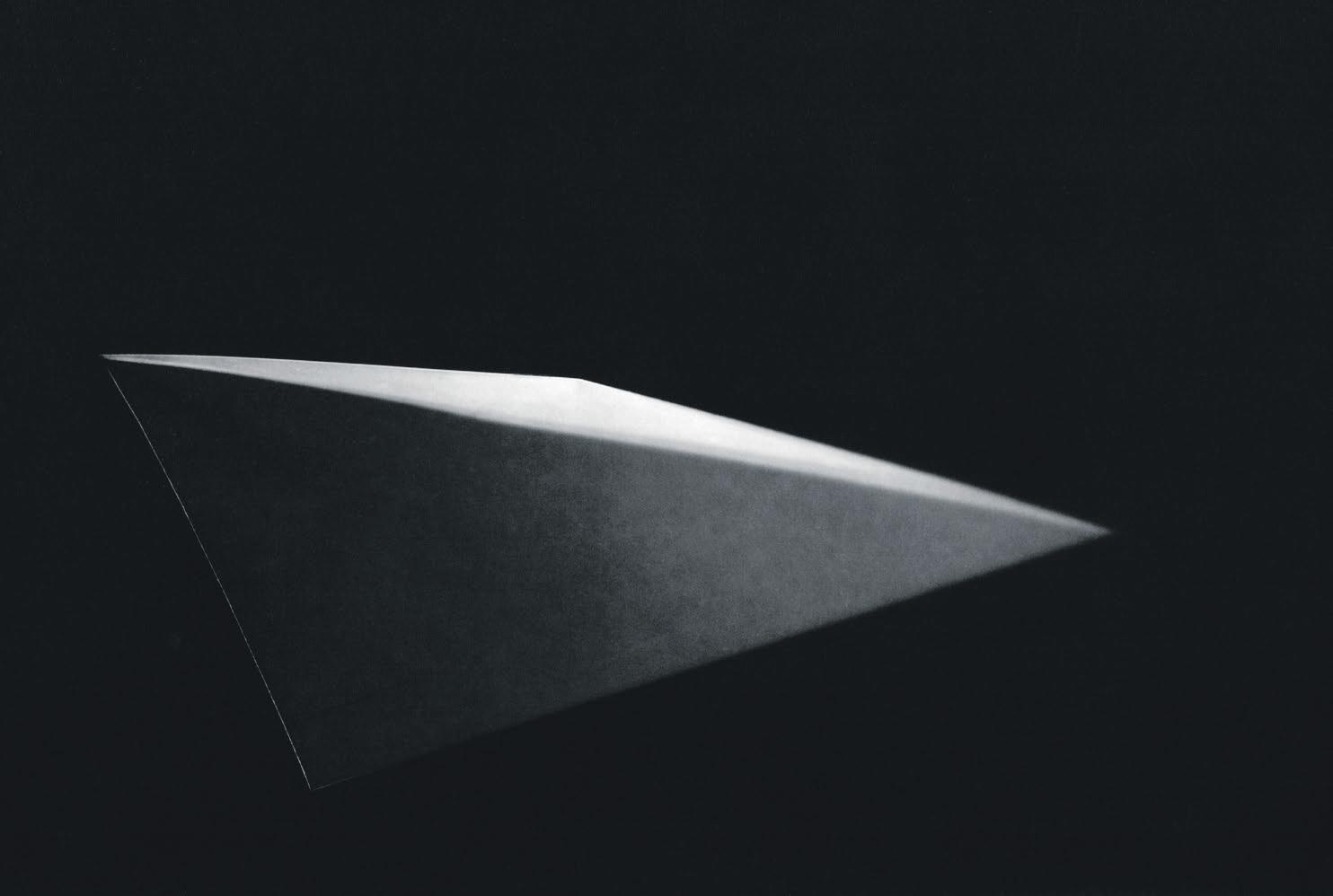
macy. The folding, pressing and unfolding triggers an involuntary sensory response that reaches your fingertips as you imagine Lynch carefully handling the photosensitive paper. She has included multiple samples, including a chequered test strip, that are punctuated by documentary photographs of the Bauhaus and other interiors. An ark forms, from the point of discovery in the photograms to the final aesthetic in the photographs, and with it a sense that creating intrigue with rudimentary materials and processes is at the heart of innovation.
The architectural photographs are exacting. Lynch foregrounds shades of silver and lead grey to preserve the subjectivity of the locations whose drama is intrinsic. Untitled [Gropiushaus 9.3] is like a cathedral rose window and almost as religious, framing a bold T-shaped window in the house of Walter Gropius, a founder of the Bauhaus. A shelved corner of a room in László Moholy-Nagy’s house produces a plain and

candid image of classic Bauhaus muted style. There is simplicity and quaint humour in her image of a spotless solid-ringed cooker hob (with a not so Bauhaus-style teapot) in a Charlotte Perriand kitchen, designed for Le Corbusier’s Unité d’habitation in Marseilles.

The analogue aesthetic that runs through ‘No Want of Evidence’ is underpinned by a beautiful exhibition publication, Grammar (Recto Verso, 2023) – a velvety soft-backed book, printed on warm ivory 115 gsm paper, unusually bound on double-width sheets that fold back, concertina-style, into the spine so that the images are reproduced back-to-back on the same leaf. Whether this was a technical solution to prevent bleeding or a deliberate design decision, it transforms the book into a substantial object that is a pleasure to hold. The publication also confirms the vast depth in Lynch’s photographic oeuvre, of which ‘No Want of Evidence’ is a tiny but powerful measure.
Carissa Farrell is a curator based in Dublin.











IAN WIECZOREK OUTLINES HIS INVOLVEMENT IN ORGANISING A RETROSPECTIVE CELEBRATING THE ART OF GUS LYNOTT.
MY FIRST ENCOUNTER with the work of Ballina-based visual artist, Gus Lynott, was in 1992, when I relocated to County Mayo from the UK. I was immediately struck by the authenticity and individuality of his work, its sense of integrity and intention, and its compelling and sometimes uncomfortable directness.
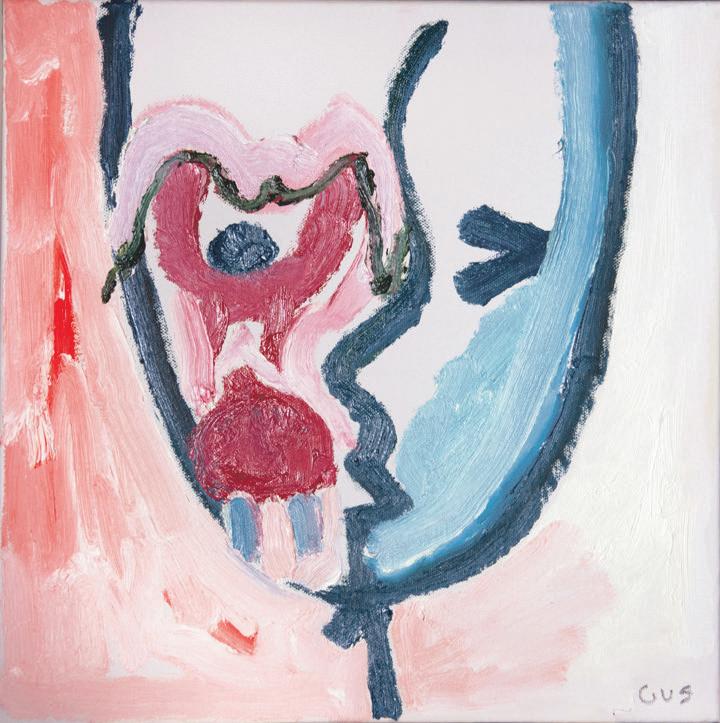
Over the past 35 years, Lynott has created an impressive and substantial continuum of work, primarily through painting and printmaking. His subject matter, whether relating to sex, the internet, or society and social mores, is both personal and upfront. His expressionistic responses are raw, yet nuanced and eloquent. However, Lynott rarely exhibits, aside from annual group shows in Mayo and its surrounds. I believe his work deserves more widespread exposure.
When I first came up with the idea of curating a retrospective of Gus’s oeuvre, I approached Sean Walsh, then Director of Ballina Arts Centre, about the possibility of hosting a show in the Ballina Civic Offices. Sean had long recognised the quality of Gus’s work and gave his full support to the proposal. I had been aware that Gus lives with bipolar disorder. With this in mind, I initially approached his cousin, fellow Ballina artist Val McLoughlin, as a family representative to ensure that any approach would be appropriate. It was only once I had confirmation that all parties were agreeable that dialogue with Gus ensued.
Ballina Civic Offices has two distinct advantages as a venue: firstly, it gives the opportunity to appropriately celebrate Gus’s long artistic career in the region; and secondly, it offers a large enough space to accommodate a significant selection from his extensive body of work for aesthetic consideration. It was envisaged that the exhibition would offer an opportunity to explore the artist’s practice within the broader context of creativity and mental health, and also that this initial retrospective might potentially bring his work further afield.
While I have had some curatorial experience, the scale and intention of the project warranted the addition of more professional heft. Approaches were made to RHA Director Patrick T. Murphy, and art historian, curator and member of Na Cailleacha, Catherine Marshall, who both responded with enthusiasm and generosity as co-curators of the project. Mental Health Ireland has also given support and expertise. A number of arts and creativity workshops in conjunction with Ballina Arts Centre are scheduled. A catalogue of Gus’s work has been published to coincide with the exhibition, with texts by Catherine Marshall, Patrick T. Murphy, Martin Rogan (CEO, Mental Health Ireland), and an interview with the artist. A video of Gus talking about his work, filmed by lens-based artist Louise Wallace, will also accompany the exhibition.
This project has required me to develop new skills as a visual artist, in terms of collaboration and project management. It has offered valuable experience in the practicalities of working as part of a team, and the
opportunity to work with experienced practitioners. It has also given me insights into the reality of living with bipolar disorder, and the role that creativity can play in managing mental health issues. And ultimately it celebrates the resilience, eloquence and raw talent of the artist. The project is supported by Mayo County Council and Creative Ireland Mayo.
Ian Wieczorek is a visual artist and curator based in County Mayo.

‘Gus Lynott – Say What You See’ runs at Ballina Civic Offices from 22 July to 26 August. mayo.ie
LAST SUMMER, THE National Sculpture Factory (NSF) commissioned me to devise, develop, and curate an online writing space for the newly designed NSF website, which launched this spring. NSF Director, Valerie Byrne, was keen to develop an element of the website that could operate as a space for writing, the impetus being that there are increasingly fewer such spaces in Ireland. While I was very enthusiastic to accept the commission, this was an invitation that raised several challenges pertinent to my own research and practice. The central question, as an artist but also as a writer, was what could constitute as writing in this context? The NSF supported this inquiry (and many others), having recently commissioned several ambitious and textbased artworks, including Eimear Walshe’s multifaceted The Land for the People (2021), which took the form of physical publication and a text-based, neon public artwork, which was situated on the NSF building from 21 June to 21 December 2021.
Through initial conversations, we developed the idea that the platform would be a curated project involving the making of new works by me and four artists or writers that I would invite across two iterations. I selected four artists – Joseph Noonan-Ganley, Francis Whorral-Campbell, Kelly Lloyd, and Oisín Byrne – whom I felt approached writing as a material in their practices through a set of diverse methodologies, thinking about writing on and off the page, as criticism or even performatively. I had worked with most of the artists previously and I knew that this would be an opportunity to continue a set of conversations centred around the use of language as a sculptural device in the making or interpretation of a work of art.
Each one of these artists had previously considered writing as a material in their practice in many ways. For example, Byrne often uses the format of script writing and song writing, while Noonan-Ganley’s meticulously researched and realised artworks have often incorporated text. I had become familiar with Kelly Lloyd’s practice

through her interview-based podcast, This thing we call Art, as we are both researchers at the Ruskin School of Art, University of Oxford. Whorral-Campbell is also a peer on the PhD (DPhil) at Oxford, who has been rigorously developing a prolific writing and art practice. Francis has recently published with major art publications in the United Kingdom and is currently a research fellow at CCA Derry/Londonderry.
The first iteration of Loading Bay launched in May and the second launched in June. An accompanying exhibition ran at the NSF on 23 and 24 June, featuring work by all four artists and a new work that I made, titled In factotum (2023). The exhibition was situated on the factory floor and contained works and performances derived from or related to the works which have been developed for the online space.
Loading Bay is an art writing space not determined by thematic parameters. This was the first decision that we made. It seemed to us that to put a more specific curatorial framework on the project would have limited the generous scope of the initial invitation. The title derives from the loading bay of the sculpture factory, an area at the back of the building where bulky materials and objects are loaded onto and unloaded; a space where materials are passed over for production, fabrication, manipulation, and distribution. Essentially the platform is an empty slate, in which the selected artists are invited to create a new online work that deploys writing as a material and prioritises experimentation in form and language. Language is rendered, as Barthes put it, “immutably structured and yet infinitely renewable.”
Frank Wasser is an Irish artist and writer who lives and works in London.
Loading Bay can be viewed by visiting the National Sculpture Factory’s website.
nationalsculpturefactory.com






EOIN DARA INTERVIEWS MARIA FUSCO ABOUT HER NEW OPERA-FILM, MADE IN COLLABORATION WITH MARGARET SALMON, ABOUT BELFAST, CLASS, AND CONFLICT.
Eoin Dara: “An experimental feminist lm opera...” Can we start with this description? e lm is incredibly complex, but these four words do a great deal of work in allowing a viewer to step into the world you’re building. Working backwards a little, can I ask what drew you to opera as a form?


Maria Fusco: Here’s a quote I like from Wayne Koestenbaum’s book, The Queen’s Throat: Opera Homosexuality and the Mystery of Desire (Poseidon Press, 1993): “Operas are works of mourning; they repeat a task that failed the first time.” Opera is obviously an historic form of performance and one that in many countries is much more integrated into everyday people’s lives – Italy for example. As a starting point, opera has the capacity to hold and share complex emotional registers in non-representational ways. I felt that the voices of working-class Belfast women (like my mother, like my sisters, like me) were already holding multiple socio-political states; opera feels like an urgent way to embody this. It’s important to remember that the work is an opera-film of course, and that the improvised live performance is also embodied into the material of 35mm film – the film also then holds the history of these real-time performances.
ED: Your collaboration with American-British Glasgow-based artist and lmmaker, Margaret Salmon, is key here in relation to the materiality of lm and the analogue (and digital) means through which you’re expanding the idea of what an opera might be. And beyond this central dialogue between the two of you, there are the voices of the family members you mentioned, as well as the work of composer Annea Lockwood. Could you speak a little about building this work with Margaret, as well as drawing in the sonic presence of someone like Annea?
MF: The hybrid form of an opera-film is one that has a few, but not many, antecedents, Robert Ashley’s 1983 TV opera, Perfect Lives, being my favourite example. The work is made from an intersectional and intergenerational feminist place, so its ethics and stance start from there. I’ve known Margaret’s work for quite a while now and have always admired its intelligence and integrity; I don’t think I could have co-made with anyone else to make this particular work. We worked collaboratively in as many areas as we could. Where we couldn’t – for example, Margaret did all of the cinematography and I wrote the libretto – we shared as much as we could, as much as we knew, when we could. An interesting problematic of making interdisciplinary work is learning how to effectively and respectfully communicate with one’s collaborators, without diminishing the message. I know lots of people say “I am so honoured to work with etc etc”, which annoys me, but I was genuinely honoured





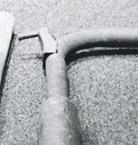

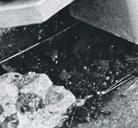

to work with Annea; she was instantly attracted to the project and accepted my invitation, I was so shy with her – in fact I still am. Annea’s attention to site-specific sound is very long established, she’s 83 and has been making ground-breaking work for a good time now! Bringing her expertise to coax out the peaceline’s voice felt like a significant process.
ED: You also worked with soprano Héloïse Werner to develop vocal improvisation in the work. ese and other voices we hear are working with sounds within public and private archives, but they have been layered, abstracted, and distorted. How does this connect with your interest in histories being held within and passing through certain bodies?



















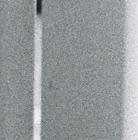
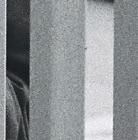









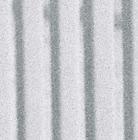



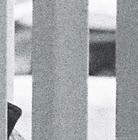

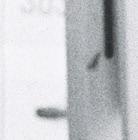























MF: I am interested in how history enters the body through sound and how history exits the body through voice – what the voice holds. I know this from my own lived experience; I believe my voice (and others’ voices) hold memory. Héloïse is a French trained opera singer, but one whose work is expansive and often experimental. We felt it was important to work with someone who is not from Ireland or the UK. Her speaking voice is placed at the start of the film to indicate this, to show that her body, her instrument, scoops up and improvises with a selection of ‘emblematic’ sounds of The Troubles, such as a low-flying heli-
copter and a Saracen (an armoured army vehicle). What you witness in the film is her improvising live with these sounds. You witness the precarity, the effort of this, the attempt – it’s very demanding for everyone involved, including the audience.












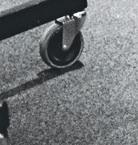





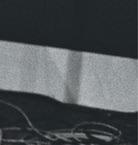

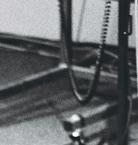






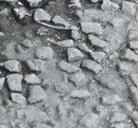
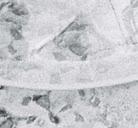








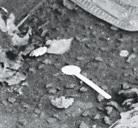



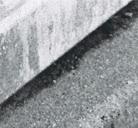
ED: Beyond these emblematic sounds you describe, can I ask about the more private and personal audio material that we also hear snippets of?







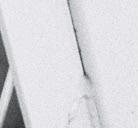
MF: Gladly, yes. These are two archival recordings made by a close family member in the early 1970s and 1980s. They are in a domestic setting, the tiny living room of the house I grew up in Ardoyne. You can hear the scale of the room, the thinness of the walls, as someone stamps down the stairs. In the first one, I am learning to speak, following the notes of my mother’s speaking voice, learning a Belfast accent without fully understanding the words. My mother died whilst I was making the work, so it was not the most pleasant experience, having to listen over and over again to her younger voice. These recordings advance the subjectivity of the work (it was not our intention to make a documentary) whilst retaining a commitment to oral history, to preserving outmoded working-class Belfast accents –women’s voices inside a house, with a war going on outside.







ED: e work premiered in Belfast and








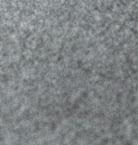





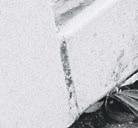


is about to head to Scotland and further a eld. How do you think these voices and accents will speak to people in places far from Ardoyne?
MF: The work was always intended to travel nationally and internationally. Perhaps some of the nuance of the ‘thicker’ Belfast accent will not be strictly translatable but the musicality sustains, and the basic sharing of a human voice feels like a caring act.


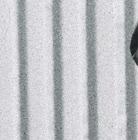
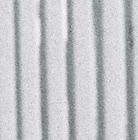


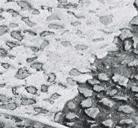
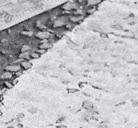

Eoin Dara is a curator and occasional writer based in Dublin, where he works as Head of Collection for the Arts Council of Ireland.
Maria Fusco is a Belfast-born writer based in Scotland and Professor of Interdisciplinary Writing at the University of Dundee.
mariafusco.net









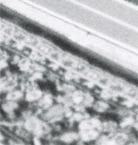
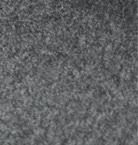




History of the Present (2023) premiered at Belfast International Arts Festival in April, as part of a programme to mark the 25th anniversary of the Good Friday Agreement. Forthcoming screenings include the Royal Opera House, London (2 July) and a performance screening as part of Edinburgh Art Festival (11 August). The project is supported by the British Council.

I WAS DELIGHTED to join UCD Humanities Institute as main project artist in their 2021 funding application to the Consortium of Humanities Centers and Institutes (CHCI) in the USA. Their proposal, an international study titled ‘Post-extractivist Legacies and Landscapes: Humanities, Artistic and Activist Responses’, was successful – only one of two worldwide. Project partners include academics from University College Dublin, Tallinn University in Estonia, the University of Witwatersrand in South Africa, the Australian National University, and Rice University in Texas, USA. The Museum of Literature Ireland (MoLI) is also involved.
The study consists of three strands: a pre-institute conference in Tallinn University, which took place in April; the Main Institute Conference in UCD in July; and the post-institute conference in the University of Witwatersrand, in December 2023/January 2024. Research field trips are also an integral part of each conference.
My role in the study is to respond to the theme ‘Post-extractivist Legacies and Landscapes’. My artistic response thus far is two-fold, taking the form of an ongoing series of paintings, titled ‘Capitalocene: From a Time of Ambition’, and the creation of an artist’s book, Mine Land, in collaboration with the poet, Patrick Deeley. Both of these projects are based on visits to Tynagh Mine in east County Galway in the 1980s and 1990s.
In Estonia I had an amazing research opportunity to visit the underground mine at Kohtla-Nõmme, the mining museum at the same location, and the surrounding ash heaps of oil-shale waste. Oil-shale mining in the Ida-Virumaa district of Estonia has a long history. However, since the Restoration of Indepen-
dence from Soviet occupation and annexation in 1991, Estonians have become more concerned about the polluting effects of oil-shale mining on their environment. Most of the electricity produced for the entire country comes from oil-shale mining. “I worry that every time I turn on my lamp, another small heap of ash is produced”, Tallinn University professor Anu Printsmann told the conference. Indeed, white ash heaps as tall as mountains dominate the Ida-Virumaa landscape, lending a ghostly appearance to the areas we visited.
These blanched spectacles contrast with my paintings, in which I am using saturation of colour to reflect the intensely coloured metallic pools I witnessed in the post-mining moonscape of the Tynagh Mine Area. With these hues, I am referencing other planets in our solar system, as well as suggesting toxicity. The hundred-acre tailings pond at Tynagh – once the largest lead, zinc, and silver mine in Europe – remains, rendering the surrounding land, known as ‘the spoil’, unsuitable for agricultural use.
I don’t want to be too literal in my response to the theme of the study. Therefore, some paintings are abstract and open to interpretation while others take a more direct approach to the Tynagh landscape. ‘Capitalocene: From a Time of Ambition’ imagines what will become of our home, planet Earth, when human activity has reached its zenith and is ‘on the turn’. Our human presence has left a toxic imprint and the natural landscape must cope with the repercussions on its own.
I look forward to making artworks in response to the research in Estonia. I expect this new work will be an attempt to grasp the ‘ghost-thing’ that resides in the bleached ashen hills of Ida-Virumaa, the silent empty settlements dotted about, and the psychic wound
that emanates from the landscape. As part of the Main Institute Conference, which takes place in UCD in early July, I hope to show some of my new work in an exhibition curated by Valeria Ceregini.
The third and final phase of the study involves travelling to South Africa at the end of the year, where we will meet the renowned artist, William Kentridge, in his studio. Through my artistic response to the study, I hope to draw further attention to mining legacies with my collaborators in this project, and to provide a vivid backdrop to the valuable research of the people at UCD and their international colleagues.
Judy Carroll Deeley is a professional visual artist based in Dublin. judycarrolldeeley.com @judy.carroll.deeley

Various strands of the ‘Post-extractivist Legacies and Landscapes: Humanities, Artistic and Activist Responses’ research project are being archived on a dedicated website. extractivistlegacies.org

‘AFTERMATH: PERPETRATOR TRAUMA and the Irish Civil War’ is an exhibition of drawing, video and installation work at the Linenhall Art Centre (28 April – 3 June), developed by visual artist Dominic Thorpe during the Bolay Residency 2022. Centralising processes and imagery, the exhibition is an exploration of contemporary and historical violence – subjects that have pervaded Thorpe’s wider practice over the past two decades.
Thorpe has most often worked through performance art, and his own body is pivotal to all of the works in this exhibition. The development of a vocabulary of repeated gestures within his performance work is carried over to the video and drawings on show and reinforces the embodied aspect of the entire exhibition. As is usual in Thorpe’s practice, the artworks are pared back and uncluttered. The individual works have an energy and an urgency, conveyed in the intense scribbles and scrawls that obscure the face and head – body parts that see, perceive, and speak. The impact is a sense of anguish and emotional unravelling.
‘Aftermath’ is also a manifestation of the artist’s abiding preoccupation with the complex contexts in which violence occurs, and the resulting emotional, psychological, and embodied trauma. In keeping with his intent to address ‘dark zones’ of human experiences and interactions, he explores the embodied nature of perpetrator trauma, aiming to sensitively bear witness to the possibly traumatic experiences of those who carried out atrocities and acts of violence during the Irish Civil War.
The ethical implications of foregrounding perpetrator trauma are not lost on Thorpe, who emphasises that he in no way purports to exonerate the perpetrator, excuse acts of violence, or ignore victims’ experiences. The artist’s intention is to bear witness to trauma that often lies in silence below the narratives of atrocity, but which can exist for the individual, the collective and generationally.
In exploring the experiences of those responsible for violence, he also intends to expand the narrative beyond binaries of ‘good and bad’ alone, and to explore the grey areas that can exist in between. Responsibility extends beyond the direct perpetrators to include a range of other actors and the often complex and layered contexts and systems in which violence occurs. Thorpe believes that pushing away the perpetrators or ignoring their trauma, can also contribute to silence and denial. In this way, the possibility of gaining deeper understanding and resolution is stultified. A denial of trauma, at an individual or collective level, can result in repeated cycles of violence. On the other hand, looking at perpetrator trauma can create a fuller account of and response to the impacts of conflict and violence.
By way of explaining his commitment to this difficult subject, Thorpe states: “I want to make work that might counteract the
Dominic Thorpe, selected drawing from ‘Aftermath’; image courtesy of the artist and the Linenhall Arts Centre. yet, ‘Aftermath’ is far from lacking in technical ingenuity. There is a glorious inventiveness to the hanging of tracing paper over line drawings of naked male figures, which, with the aid of viewer-activated fans, undulates like muslin curtains, serving to reveal and to hide, to obscure and to disclose, and in doing so, subtly conveying the ebb and flow of remembering and forgetting. A larger four-metre work is displayed like a tapestry and shows a line of figures, the upper parts of their bodies covered by a dark cloud of biro markings, which have various gradations of intensity. A technique of sellotaping a number of biros together to generate the markings, was employed by the artist to both speed up and intensify the process, while perhaps echoing the spirit of action painting. There is something of an event about this exhibition, which succeeds in disclosing to the viewer aspects of trauma that may not be consciously registered, but which reside at the level of bodily experience and memory.
kinds of silences that are destructive.” His recent doctoral thesis on representations of perpetrator trauma in performance art in Ireland (Ulster University, 2022) adds considerably to an understanding of trauma and how it is given expression by performance artists.
While ‘Aftermath: Trauma and the Irish Civil War’ works very well as an integrated exhibition, it is also worth focussing on the subtleties and nuances contained in individual works. One such work is a drawing of a man standing precariously on the edge of a chair, with one hand firmly over his face, the other limply at his side, his facial features covered over by lines scrawled in ink. The chair is missing its seat; it offers no comfort and may even be a means of suicide. Thorpe often works with chairs and other household objects, perhaps alluding to trauma that happens in the domestic sphere. The video installation is a mesmerising work, due mainly to the artist’s signature use of a repeated gesture. Accompanied by a recurring ‘pop’ sound, which may have resonances with civil war executions.

The artist humorously describes his exhibition as being ‘analogue’ in its presentation;
As with Thorpe’s performance work, there is a primacy of ‘embodied witnessing’, engendering visceral responses and emotions. By not naming or identifying any
specific act of violence in the Civil War, the artist gives space to the viewer to engage with the works on a subjective level. Thus, ‘Aftermath’ may be seen to provide a ‘clearing’ or ‘Khôra’ – a place where, according to classical philosophy, being happens.
Embodied memories, so central to the artist’s vision, have profound relevance to the decade of centenaries, and to the nation’s collective efforts to come to terms with aspects of our postcolonial history. Artist Alice Maher, in her opening speech at the launch of ‘Aftermath’, captured this sentiment when she spoke of “the body as material, the body as repository of memory... Not what it looks like, but what it holds within its gestures, its sinews, its fluids, its ancestral DNA for generations.” Maher also commented that “the whole population from top to bottom was inundated by the breath of trauma and the rule of silence and is now only scratching the surface of collective darkness.” In ‘Aftermath’, by excavating the darkest zones of memory and embodied experiences, Thorpe enables us to delve below that surface.
Mary Flanagan is a writer based in County Roscommon.
THE 12 ARTISTS in
show curated by Miriam O’Connor
refigure the Irish rural landscape as a provisional habitus caught in a state of suspended animation. ‘This Rural’ (20 May – 16 July 2023) investigates the temporality of life away from the cities, over geography, with photography very much the favoured medium. Where landmarks appear in this exhibition, they tend to function parodically. The rough finish of Lismore’s old mill, with its poured floor, pocked whitewash, agricultural lighting, and ivy trailing in through the industrial windows, showcases this work to stunning effect.

Walk in the door and Ruby Wallis’s glossy black cat stalks towards you. By far the largest piece here (150 x 250 cm), its scale unsettles expectations of the space while inverting gendered narratives of predatory behaviour. Taken from her series of nocturnes, A Woman Walks Alone at Night, with a Camera (2022), Wallis’s inclusion gestures towards the experiential knowledge and embodied practices evident elsewhere.
The archival displacement of rural sociologies preoccupies Katie Watchorn, Laura Fitzgerald, and surfaces again in Ciarán Óg Arnold’s award-winning series documenting nights out on the lash in Ballinasloe. Two vitrines display the accumulated records of the dwindling dairy herd belonging to Watchorn’s father in County Carlow. A list of names – ‘Doubtful Heifer, Long Face’ – amounts to a sorry roll of honour amid the later dockets that simply give tag numbers and carcass weight, some annotated in red: “Had dead calf in Well Field, 1994”. A quiet grief at the cold impact of modernisation on her family farm animates the visual restraint more broadly typical of Watchorn’s sculptural work.
Watchorn, Laura Fitzgerald, and curator Miriam O’Connor (a visual artist who also runs her family farm in Cork) appeared
together in last year’s stellar exhibition at the RHA: ‘A Growing Enquiry: Art & Agriculture, Reconciling Values’(18 February – 24 April 2022). Here in Lismore, Fitzgerald’s newspaper dispenser injects a jaunty shot of felt-tip blue into this tonally subdued show. Three euros in the slot buys a copy of The Inch Conglomerate Printed on the same salmon-pink newsprint as London’s Financial Times, articles on the liquidation of rural life achieve a manic comedy by pushing bureaucratic process to absurdity. A headline reads “Grannies fail their National Person Test (NPT)”, while ‘Public Art Emergency’ declares the artist’s own redundancy. Ireland enjoys a vibrant tradition of rural absurdism –Beckett, O’Brien, Milligan – and this fine publishing project repurposes Flann O’Brien’s bicycle to negotiate the yawning potholes in the road to rural obsolescence. In equally satiric vein, Michele Horrigan’s video, shown on a tiny Panasonic TV, re-enacts the hit dance sequence from Flashdance (1983). What a Feeling! (2014) relocates this sexploitation tale from the steel mills of Pittsburgh to Aughinish, where waste from the aluminium factory contaminates the Shannon banks. Horrigan’s enthusiastic performance (in leg warmers) is powerfully diminished by the industrial plant behind her – effectively curtailing Irene Cara’s promise that “in a world made of steel, made of stone, you can dance right through your life.”
Ciarán Óg Arnold also challenges pastoral assumptions about the state of nature in rural Ireland. Synthetic materials catch the eye in two grainy prints from his monochrome series, I went to the worst of bars hoping to get killed, but all I could do was get drunk again (2015). Fake foliage attracts dust in a corner of the function room, where the synthetic highs have long worn off. In contrast, Patrick Hogan distils a sense of Germanic angst in his study of a coniferous glade. The moss glows with diffuse light providing a forest refuge from the open day, just glimpsed at the edge of this beautiful photograph.



Ailbhe Ní Bhriain’s impressive work approaches nature by deconstructing the archival impulse that threatens to displace the phenomena it records. Inscriptions (1) (2017) features a ferny cliff and forest-scape viewed through a filmy shape (a plastic bag, perhaps). Incongruously, a strip of creamy masking-tape appears to dangle from the black and white print. Inscriptions (8) (2017) has a display of hawks largely obliterated by a sheet of white mypex. Ní Bhriain’s exciting use of collage techniques complicates her depth of field, making it hard to decipher the landscape. Implicitly this work subverts realism as an appropriate documentary aesthetic for representing ecocide.
Half the pieces here emerged during lockdown, when foreclosure on the view refocused our attention on plain objects, close at hand. Caoimhe Kilfeather’s monochrome prints, delicately hung on the rough whitewash, part two sheets on a washing line to reveal a glimpse of blurry hedge limiting the sky. Erica Van Horn’s calendar neatly records the visual puns identified on her daily round: an empty spreader, fashioned from a blue drum, accompanies her neighbour’s complaint that, with the pub closed, the chance to spread a good story is gone.
A pair of dead chaffinches, printed in exquisite colour by Samuel Laurence Cunnane, nods to the lurid morbidity of the pandemic before bringing us inside where his portraits of Izzy, a woman capably engaged in household tasks, intimate his bemusement at the sudden monotony of life. Brian Mac Domhnaill and Tom Keeley each document country roads where the crossroads run out of purpose amid a cluster of signs. “Border Communities Say No to Brexit” features on a banner in one of Keeley’s images, indicating a breakdown in communications, evident too in the satellite dish and aerial, mounted on a white bungalow in Mac Domhnaill’s close studies of rural anonymity.
IN THE SPRING of 2021, I was approached by the Shell/Ter Artist Collective (S/TAC) of five women artists, who had an idea for an exhibition at the National Gallery of Ireland (NGI) on the theme of shelter. The concept intrigued me and the idea of working with a group of dynamic artists was a further incentive. The proposal for a Print Gallery exhibition called ‘Shelter’ was formally put forward and met with approval. Over the last two years, I have worked closely with the collective to develop and hone the exhibition, which addresses deeply felt human experiences.
Shelter is a fundamental need. We shelter against the elements and against perceived threats, both internal and external. The word shelter suggests a protective space – anything from a canopy to an embrace. Directly and allusively, shelter has long been a preoccupation for artists. The new works created for this exhibition foreground the somatic and psychological aspects of the theme.
The collective itself is also a shelter of sorts. The group – made up of artists Diana Copperwhite, Allyson Keehan, Niamh McGuinne, Sharon Murphy, and Geraldine O’Neill – developed organically during the pandemic, initially through shared dialogue about the effects, both personal and professional, of a shifting and unpredictable world. The purpose of the collective was to create a space where members could explore, enrich and diversify their practice while supporting each other. Each of the artists, either implicitly or explicitly, draws on art history to inform their own practice and all believe that public art collections are an important reservoir of inspiration.

An Arts Council Visual Arts Bursary Award, received by Niamh McGuinne, supported a series of workshops that took place in The Chocolate Factory, a creative space in Dublin. The workshops provided an opportunity for the artists to work together and share

ideas. During an early session, they made ‘capes’ from mono-printed sheets; later the capes were dismantled and the sheets bound into books. Following many iterations, a final collective piece came into being; entitled The Clothes Line, this work now hangs in the light-filled atrium outside NGI’s Print Gallery. In this setting, the ubiquitous clothesline is a symbol of shelter, connectedness, and intersection. The installation overtly plays with notions of ‘life on view’, private versus public, acts of display and exposure, domesticity and so-called ‘women’s work’.
Within the overall theme of shelter, a series of conceptual threads are woven through the display within the Print Gallery. The core of the exhibition centres on new work made by the collective members alongside a diverse selection of objects from the National Gallery of Ireland’s collection, including a folding screen made by Mainie Jellett (NGI 4316), Edgar Degas’s pastel drawing of two harlequins (NGI 2741) and a sixteenth-century drawing of Mary Magdalen outside a cave by Domenico Campagnola (NGI 2038). In addition, we have borrowed five pieces by artists who have been inspirational to the group: Tom Hunter, Gülsün Karamustafa, Sharon Kelly, Daniel Pitín, and Liliane Tomasko. The dialogue between contemporary artworks and historical objects from the Gallery’s collection offers a rich and varied exploration of three subthemes:
• Stability and flux: Addressing ideas around boundaries, physical borders, abstract space, and the body as archive – a shelter for memory and experience.

• Embodied space: Perceptions of ‘real’ and imagined spaces and the liminal space of anticipation. Spaces as catalysts to support human transformation and change.
• Veiling and artifice: Obfuscation for protection, the pretence of performance and the signals given and sought, in order to elicit meaning.
Allyson Keehan presents draped fabrics in various formats; her oil painting, moulded cardboard, and cascade of frothy pink satin all refer to the longstanding importance of drapery in art and its role in veiling and obscuring. The overlapping layers of pink fabric are reminiscent of folds of flesh or hidden internal elements of the body. Geraldine O’Neill’s work evokes the fears and anxieties she holds as a mother, and her instinctive need to protect her children. There are underlying references to climate change and overt references to shelter in the form of St Jerome’s cave in the desert, borrowed from a painting by Velázquez.

Sharon Murphy explores how performance can act as a shelter, allowing one to be something or someone else. Her work, rooted in her experience of theatre, questions the boundaries between the seen and the unseen, the real and the unreal. Niamh McGuinne’s expanded print works look at how clothing can veil and protect, allowing for transformation and change. Her constructions, nominally transparent but layered with images of patterned glass and lace curtains, manipulate the viewer’s perception of space. They echo how we control which aspects of our inner lives are seen. Diana Copperwhite’s paintings, although rooted in observation, present an abstracted take on the world. She is interested in people and in what is behind the surface, yet she presents anonymous figures, obscured by colour bars. In a way, she is acknowledging their humanity and protecting their identity.
Anne Hodge is Curator of Prints and Drawings at the National Gallery of Ireland. ‘Shelter’ runs in the Print Gallery from 8 July – 12 November. nationalgallery.ie

PRESENTED AT THE Hayward Gallery between February and May, ‘Extinction Beckons’, was a partial, albeit intentionally distorted, survey of Mike Nelson’s practice from the mid-1990s to the present day. With its ominous title, the exhibition reconfigured and reimagined 15 of the artist’s major works and incorporated materials from various other sources.
Twice nominated for the Turner prize, Nelson was born in 1967, the year before the Hayward Gallery opened in 1968. Designed by Higgs and Hill, the emblematic piece of brutalist architecture, with its exposed grey concrete, at one point in time represented the same collapsed post-war ideals that Nelson often excavates and complicates through his sculptural practice.
Nelson conjures reclaimed materials that have long since passed their initial function in the realms of industry and architecture to construct large-scale immersive and labyrinthine installations which subvert and occasionally obliterate the viewer’s expectations of a space. Early in his career, he developed hybrid scripts, blending obscure political and counterculture subjects into Borges-esque fictions, inferred through installations that suggest the viewer is occupying a strange space of something that has long since happened or has only just occurred. Broken old doors, straight and bent rebar, cast concrete remnants, waiting rooms, busted tyres, empty barrels, creaky corridors, worn-down floorboards, bits of plastic, sun tarnished images, sand-covered buildings, stopped clocks, a tipped-over chair beside a roulette table, an empty bar, and rusty cogs from retired machines, are but some of the reoccurring combinations and materials appearing throughout Nelson’s practice.
Solstice – from the series ‘The Asset Stripers’, shown in Tate Britain’s Duveen Galleries in 2019 – is made of hay rakes, steel trestles and girders, concrete slabs, and other materials which were conflated and flattened

to the extent that their original function is incomprehensible. Untitled (public sculpture for a redundant space) (2016), which was situated under one of the Hayward Gallery’s iconic brutalist staircases, comprises an algae-covered sleeping bag, filled with bricks and concrete. The imprints of bodies are everywhere in Nelson’s work, but actual human forms are nowhere to be seen.
From the very start of the exhibition, the viewer’s familiarity with the gallery is intentionally skewed. An invigilator is waiting at a door; not the usual entrance into the space, rather the narrow entrance of the gallery’s old book shop. After a set of instructions and warnings are issued by, in my case, an extremely tired invigilator (who had perhaps unconvincingly said the same line, “Welcome to the Hayward Gallery”, a couple of thousand times already that day), I enter a corridor, where the gallery’s mediation explains that the first work in the exhibition is I, imposter (2011) – a work first shown at the Venice Biennale in 2011. A storage room is lit by red light entering through an artificial window; it contains work piled on deconstructed factory shelves, and the work is not installed in the original form. It feels as though I am walking around an abandoned warehouse while an apocalyptic scenario unfolds outside.
Storage, something waiting, a moment in time passed; such themes are conceptually foregrounded at the very start of this exhibition and this register permeates throughout. Elements of I, imposter were also reused in other parts of the exhibition. The red-lit darkroom of the original installation is partially connected to the spectacular bunker-like structure of Triple Bluff Canyon (the woodshed), which in turn is surrounded by empty barrels of oil – a reimagined reconstruction of Robert Smithson’s Partially Buried Woodshed (1970) –and covered in forty tonnes of sand, as if a sandstorm has just occurred.
The second room contains The Deliverance and The
Patience (2001), a maze-like structure comprised of many corridors and rooms. The piece was first installed in an old brewery at the 49th Venice Biennale in 2001. The work itself is highly reminiscent of Ilya and Emilia Kabakov’s Labyrinth (My Mother’s Album) (1990) and Nelson’s widely acclaimed installation, Coral Reef, which was installed in Matt’s Gallery in early 2000. The distinctive spaces of the installation seem to allude to fictions that are somehow just beyond comprehension. An empty bar, an airport waiting room, an altar for some occult ritual – each room is connected by a parataxis of squeaking old doors. However, despite the scope and spectacular calibre of these immersive installations, the work sits uncomfortably within the institution of the Hayward Gallery itself.
Each piece was accompanied by an invigilator and often the popularity of the exhibition (I visited several times with my students) meant that viewing each piece came with a long queue and detailed waiting instructions. The problem was not the queuing but what was encountered between the works. The exhibition differed from previous iterations of Nelson’s work in that the institutional mediation felt at times unchecked. It is impossible not to think of the museum workers one encounters, who are perpetually reeling off scripts or clicking tally counters. The Hayward Gallery, as part of the wider Southbank Centre, initiated mass redundancies during the Covid-19 pandemic. Precarious labour, declining living conditions, and the erosion of workers’ rights are further implications of the failed utopian promise muted by post-war modernism that Nelson’s work so heavily hinges upon. Inadvertently and explicitly, the blockbuster exhibition serves to highlight some of the complex inequalities operating within large art institutions today.









SUPERMARKET IS AN international art fair for artist-led initiatives. It has been running annually in Stockholm since 2007 with the declared aim of strengthening the position of independent, not-for-profit art initiatives on the local and international scene. The art fair claims to prioritise non-institutional, experimental formats, and the flattening of hierarchies. In my view, SUPERMARKET does these things very well.
The public-facing days of a fairly standard trade fair are complemented with networking forums and a programme of meetings, talks and performances. However, in my experience, the success of SUPERMARKET depends less on this programme than on the simple fact that all these people are brought under one roof for a week. This year saw 56 booths with participants from 23 countries and 42 performances and talks.
Since the focus of the event is artist-led initiatives, the place is full of artists who have decided to take matters into their own hands and ‘just do it’. The place is teeming with energy. While clearly a tightly-run ship, the atmosphere feels anarchic and experimental. Performance artists are doing their thing in every available space; it is a place where connections are made, and there is a sense of potential that anything can happen.
I have attended the fair almost every year since I stumbled upon it in 2011, while living in Stockholm for five years. The impact of SUPERMARKET on my own career, and subsequently Interface, has been critical, as it has facilitated connections with organisations across Scandinavia and Europe. Interface’s programme of international collaboration has developed into a vital artery of connection between remotely located Interface artists and vibrant artistic networks in Istanbul and Stockholm.
The theme for this year’s art fair was ‘Twilight Zone’. Interface presented a series of paintings by Ian Wieczorek, titled One Day: 40 sunrises (2020), and Noel Arrigan’s Performance with Fakir Sandals (2023). “Sunrise”, writes Wieczorek, “is a phenomenon we are all familiar with, and regardless of geographic location or setting, it is an event that is infused with optimism and the possibility of new beginning.” The simplicity and hopefulness of this recurring image, connecting us globally, felt appropriate and became a point of relative calm in the chaos of the fair environment. Noel echoed this sereni-

ty, as he entered into a meditative space, walking on his sandals of nails. He sang his mantra into a tube, causing a mirror to oscillate and bounce a laser beam over the wall, making visible the invisible.


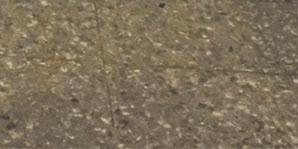













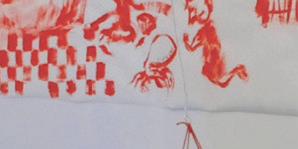





Interface’s booth was located between that of artist-led spaces, Altán Klamovka (Czech Republic) and KYOJIMA STATION (Japan). Curated by Lenka Sýkorová, Altán Klamovka’s booth explored the twilight zone as the interface between day and night, and between physical and virtual worlds. The exhibiting artists, Jana Bernartová (CZ), Petr Dub (CZ), Darja Lukjanenko (UA) and Cameron Tauschke (AU) reflected the uncertainty of the present and a certain search for lost worlds.
Petr Dub’s performance as a ‘knight in shining armour’ interrogated the values or archetypes defining society, in the context of feminism and decolonisation. His transactional performance found an interesting dialogue with that of iTA-Choco Rasho (KYOJIMA STATION) and Swedish artist Peter Johansson, whose provocative practice was present only in his small self-portrait, looking down on us from the wall of Lund-based Aura Art Association. Artist iTA-Choco Rasho performed almost non-stop with his compelling Stadshamnen Fish Shop (2023). In an improvised response to traditional mask theatre, he replaced one dripping mask with another; his almost balletic dancing and site-responsive sing-song became the backdrop of our week.
Ormston House upheld their tradition of a strong, one-person booth with the exceptional work of Jennifer Trouton. Detroit Stockholm presented work by Slovakian artist, Eliška Kováčiková, and Danish artist, Christine Dahl Helweg-Larsen. Using the construction of a ribcage as a point of departure, various elements of wood, glass and silicone became united in their shadows. Kováčiková’s sculpture, Obscuratus (2023), was created from recycled wooden slats of a house exterior. Exposed, crushed under pressure, and reconstructed, the piece was built in a demolished form, levitating in the air with its cracked joints.
My favourite moments were surprising performances, such as when the Gilbert & George-esque performance duo, WOL (Lovisa Johansson and Wenche Tankred) slid by, each pushing a giant planter, inside
which they later played miniature accordions. Then Maria Skeppström glided by in a dress of spruce and pinecones, the amplified crackle of her movements comparable only to the sounds of cracking ice, bringing nature indoors.

Ultimately, SUPERMARKET offers both the benefits of networking and the chance to engage with eclectic and engaging international contemporary arts practice. Looking outwards is always a rewarding experience.


Alannah Robins is founder and director of Interface – a studio and residency programme located in Connemara. interfaceinagh.com


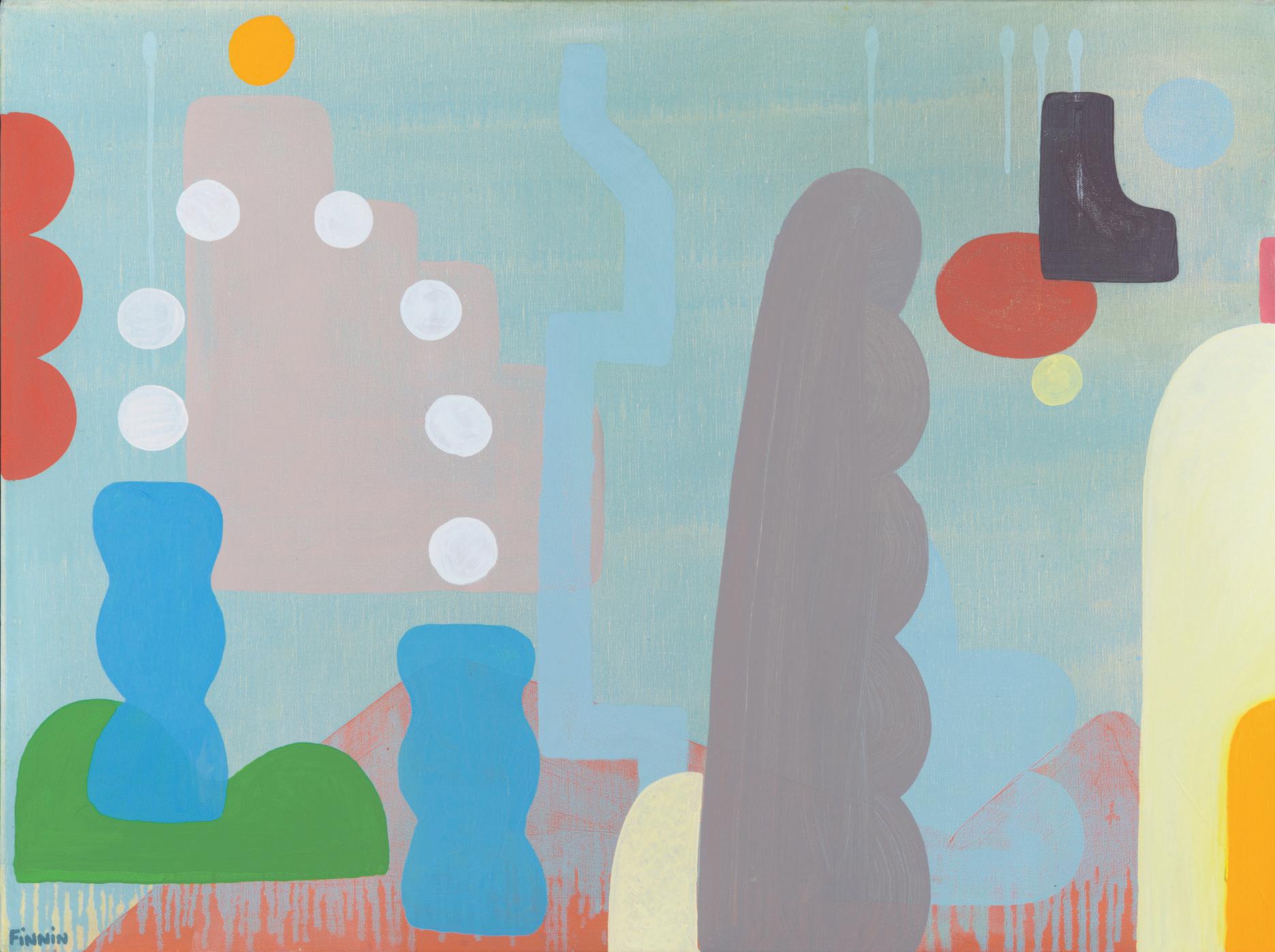
MY PATH TO being an artist started traditionally and then took a series of lucky twists. In 1989 I attended foundation year at the Limerick School of Art and Design. I had planned to go back and study painting or sculpture the following year but ended up in Mexico instead and I met a lot of American and Mexican artists. I had a free studio on a roof where I worked for about a year to produce my first ever solo exhibition. I sold a few paintings and so was able to stay a bit longer and eventually buy a ticket back to Ireland.
I applied to NCAD in Dublin and was accepted into first-year painting. There were some great people there, but I felt I was just method-acting my way through art college, so I decided to leave and paint whatever I wanted. It seems impossible to believe today, but in the early 90s, there was an abundance of cheap Georgian buildings for rent in Cork and Dublin. They had high ceilings and big draughty windows and made great live-in studios. So for years, I painted in various old buildings, travelling and working abroad whenever possible. I would soak up every museum and gallery, returning to Ireland to rent another studio-type place and begin painting again. It was a time of lighting cigarettes off two-bar electric heaters, looking at paintings, and passing the time until the next dole check.
Discovering the European avant-garde movement, COBRA, and the Italian Arte Povera movement gave me the confidence to keep going. I sourced most of my materials from skips, using large sailing tarps, doors, or breadboards as canvases. I mixed fungus, Monster Munch crisps, marble dust, ash, and pigments into my paint. The skip outside Cork Opera House was a treasure trove. My palette was dark, the gamut only browns and greys, and any colour was an accidental find.
I never saw myself as a painter, but after years of constructing work this way, I realised that maybe I could be. I bought one of those small travel watercolour sets and started bringing in colour and, eventually, oil
paints. I exhibited in Triskel Arts Centre and Vanguard Gallery in Cork, Kevin Kavanagh and Origin Gallery in Dublin as well as other galleries. I spent some time on art residences in Cill Rialaig in County Kerry, the Vermont Studio Center in America, and Centro Dedalo Arte in Tuscany. In 2008 I went to an opening at the John Martin Gallery in London and showed them my work. The gallery included me in a group show and gave me my first solo exhibition with them in 2010. We have since had seven solo shows, including art fairs and two exhibitions as part of the Mayfair Art Weekend.
My most recent exhibition, ‘The Grammar of Clouds’ at the John Martin Gallery (26 April – 26 May 2023), brought together paintings from the last two years of working between Italy and Ireland. I take the canvases back and forth with me. The studio I usually use was unavailable this time, so I worked out of the back of a van in an Italian field. These new abstract paintings smell of Italian mountains with cool waterfalls and the smoke of wildfires. They sound like cicadas and bullfrogs. They taste like gelato with swirls of lime. There are snakes in the grass and old masters on the walls. I see these canvases as imprints of Italian landscapes and subconscious thoughts.
Italian Renaissance masters have been a major source of inspiration for me for the last 15 years. I go to the work of Uccello, Piero della Francesca, Masaccio and Sassetta for source material. I travel to see these paintings in real life as often as possible and spend hours drawing elements of armour, the shapes of shadows, or the hat of a warrior. I re-draw these shapes many times over the following months until they are entirely abstracted. Eventually, I might try one of them in a small oil painting. From there, the shape might jump onto larger works and stay around for many future paintings. As an artist, I try to make my own abstract language. I need shapes and colours that I am familiar with, almost like a private alphabet, to tell the story of
world.
The four bronze sculptures in this exhibition are a new direction for me that I am very excited about. A friend introduced me to artists at the Vicolo degli Artigiani Foundry in Pietrasanta, Italy, who guided me through working in the lost wax process. These bronzes are very playful. They were inspired by observing daily life in Italy. Their strong figurative and narrative aspects surprised me. It takes a long time to let the learnt meaning wash out of me when I abstract things. Playing with wax is so immediate that I didn’t feel the need to slow things down. I recently saw some beautiful plaster maquettes by Henry Moore in the Victoria and Albert Museum in London, which got me thinking about the different materials, aside from wax, that can be moulded and made into bronze. I plan to spend the next few months working on papier-mâché and plaster maquettes. If the results are successful, I will return to Italy to make moulds and cast them into bronze.
I AM AN artist working in Belfast who has been a member of Queen Street Studios (QSS) since 2019. I studied at the Ulster University and gained a BA Hons in Fine Art in 2016 and a Masters of Fine Art in 2018. In 2021, I went on to study at the Glasgow School of Art for a PGCHE in the Creative Disciplines and now teach Art and Design to incarcerated adults. I have exhibited in many group and solo shows across the island of Ireland and have received various awards, including funding from the Freelands Foundation and the Arts Council of Northern Ireland. My work is included in several public collections including the Ulster University’s permanent collection and Stormont’s Parliament Buildings permanent collection.


In 2021 I had solo shows in QSS, Newtownabbey, and Hydebank Prison. The three exhibitions were iterations of ‘Bruxism’ – a term referencing teeth grinding and night terrors, which I used to describe a dark, nightmarish investigation into dream states and the subconscious. I considered these ideas and personal understandings through installation, borrowing stylistically from the sombre dramatic chiaroscuro of Renaissance painting and the melancholic, earthy glow of the Dutch masters. The exhibitions delved into a new medium for me – fabric, which has since developed into a new body of work.
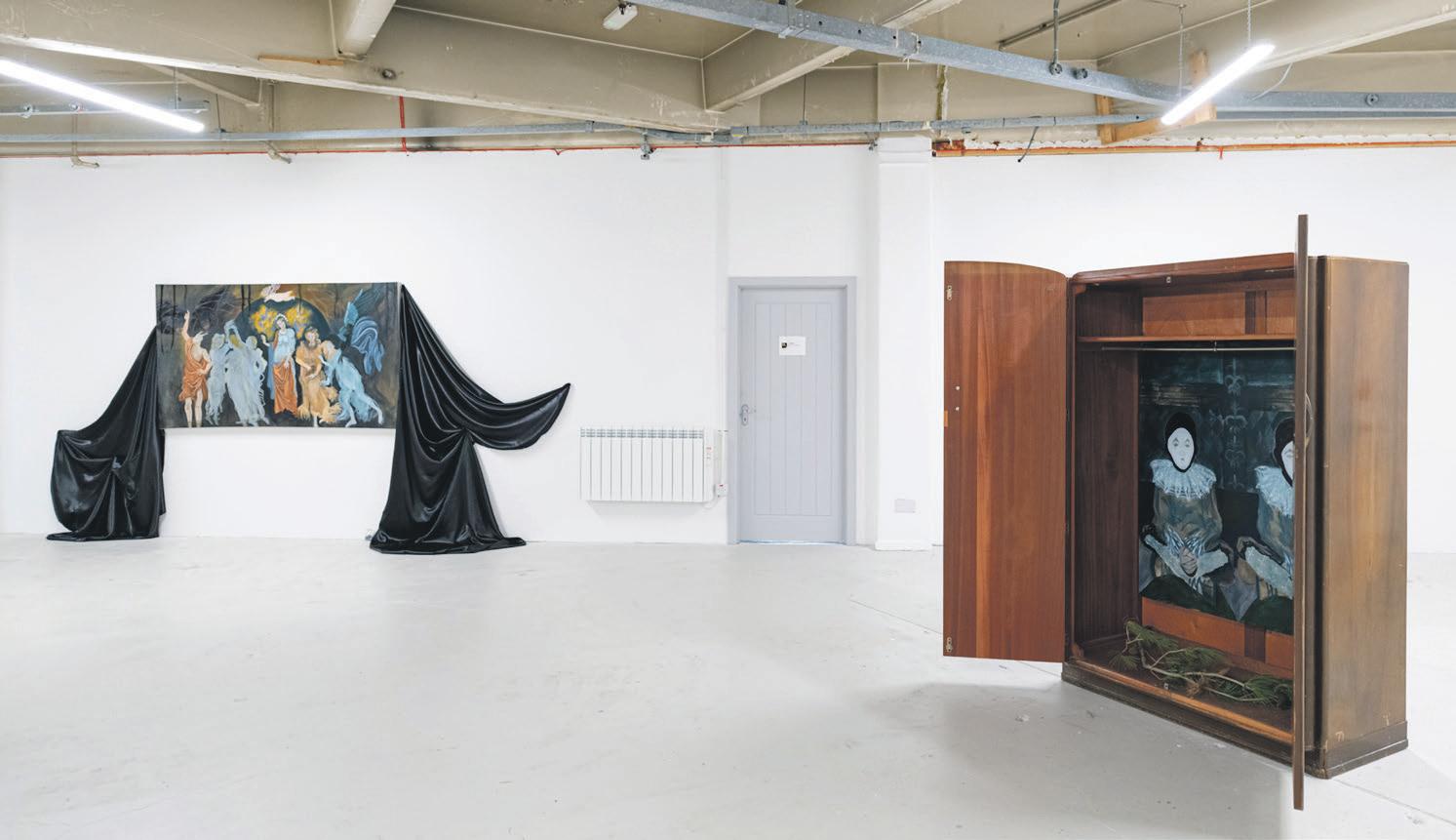
‘Bruxism’ was my initial introduction to painting in
the expanded field. It involved the support of textiles and objects to act as an extension of painting, with the entirety of the space considered. I have since further explored painting and installation in other ways, through a collaborative show with artist Michelle McKeown, ‘Future/Forward’ last year, which was shown in QSS in Belfast, and MART in Dublin. In this exhibition I utilised fabrics in a performative and theatrical way, as a physical support for small paintings, which were hidden in the drapes and veiled by sheer fabric. The installation poured onto the floor with large, black, glossy ‘splats’, reflecting the monstrous yet delicate fabric composition on the wall.
Themes such as the monstrous feminine, horror, and the uncanny are typically present in my practice, but recently there has been a major shift in this trajectory with the work becoming more satirical and playful. My colour palette has burst into light with fruity colours and the addition of iridescent, glittery fabrics, as opposed to the liquid blacks and velvets of recent years. Planes of the canvas that were previously explored with oil paint are now becoming softly tangible, inspired by the Abstract Expressionist experimentation of the 1950s, in surface and texture. A fleshiness seen in my older work is now being explored again in more vigorous ways through framing, support and drapery. I have always enjoyed reflective elements, and light and
shadow are important in my work. In the past, it was dark geodes and obsidian stone; now it is iridescent, coloured plastics.
I have been painting directly onto fabrics and stretching them over oil paintings. Draping, veiling, and folding are exciting prospects in the work; the idea of ‘wrapping’ paintings to reveal or conceal is a newfound focus. I have also been playing with the idea of painting as backdrop, to be moved around the walls and used as a kind of punctuation, prop or theatrical device. Large, gestural brushworks have been cut out and attached to the studio wall with the lavish fabric painting in front. The folding and mirroring create otherworldly echoes. The pink-lit, flayed and folded flesh are influenced by nineteenth-century depictions of meat carcasses as well as shrouds and skin – a subtle violence, maybe.
I am currently developing a new body of work for a show next year that is investigating material, resources, and less common items, such as tinsel, tights, and bunting. New developments in textiles, installation and painting will be nearly the exact opposite of the dark, melancholic show, ‘Bruxism’ in 2021. The work has waded through black treacle for a time and has now emerged with glistening glitter bits.
Amy Higgins is an artist based in Belfast. amyhigginsfineart.com
Niamh Clarke, Hiroyuki Hamada, Vincent Hawkins, Tjibbe Hooghiemstra, Jamie Mills, Janet Mullarney, Helen O’Leary, David Quinn, Seamus Quinn, Sean Sullivan and John Van Oers Curated by David Quinn

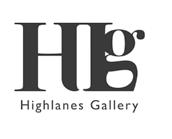

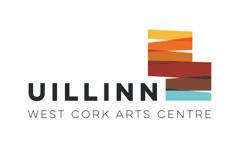












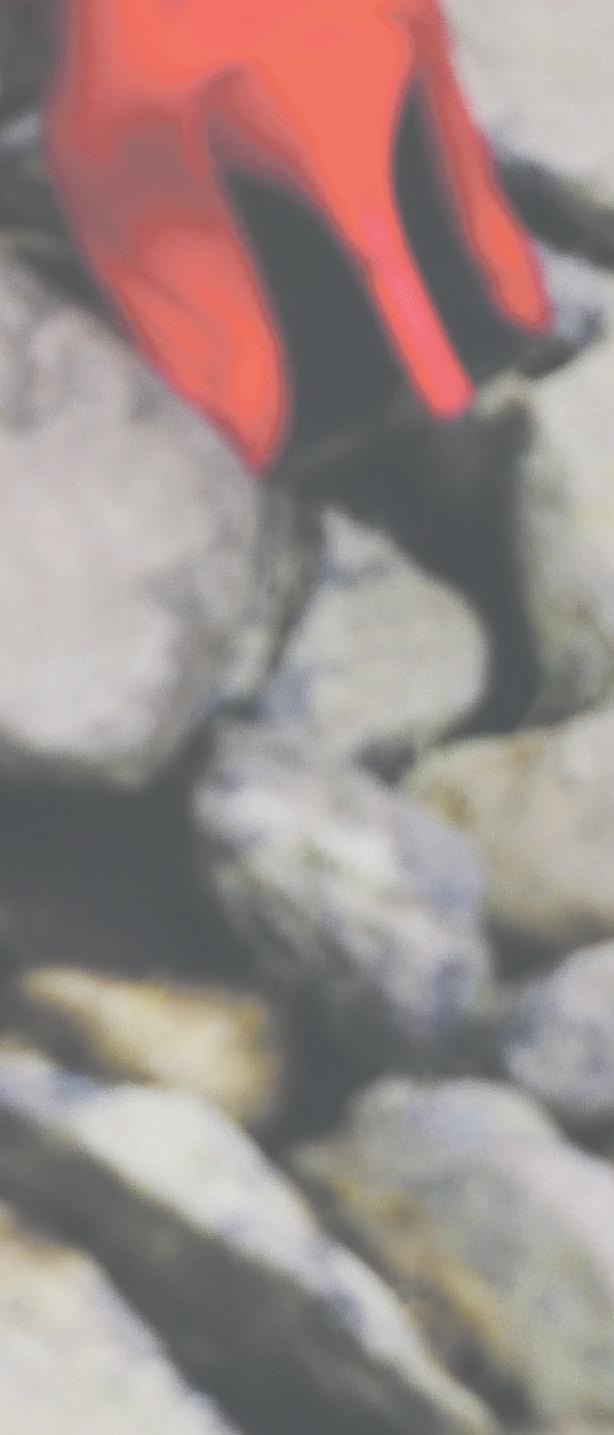












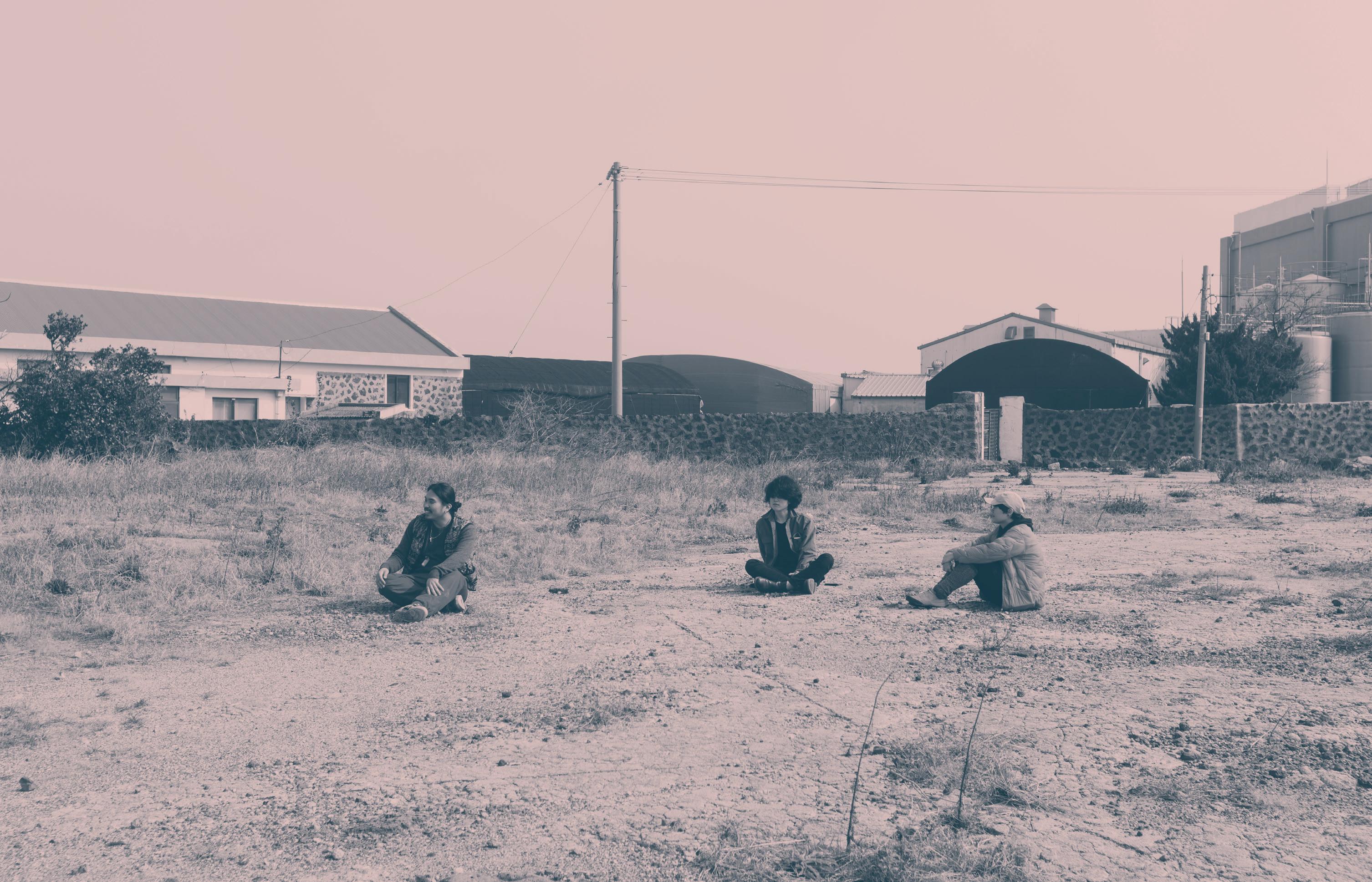



Curated by: Catherine Bowe and Karla Sánchez Zepeda

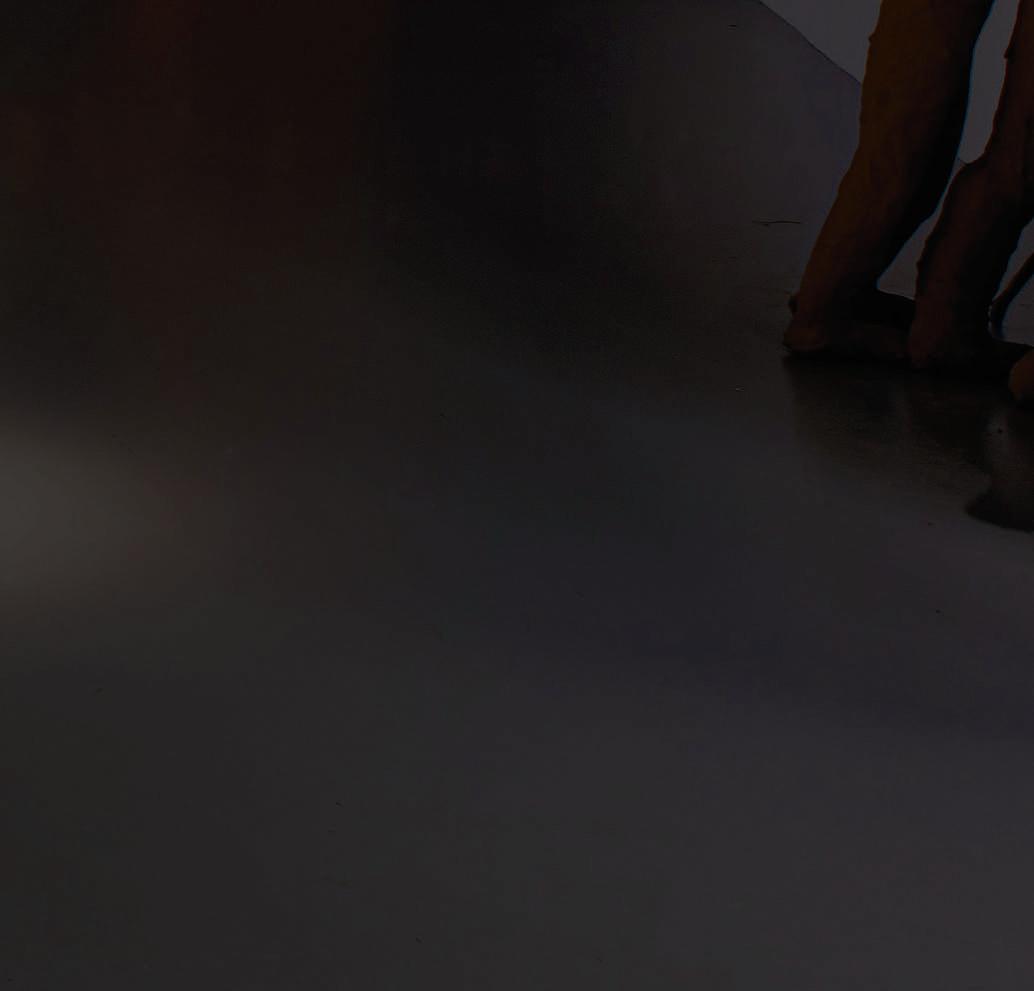
HIGHLANES GALLERY
1 July - 19 August 2023


Highlanes Gallery | +353 (0)41 980 3311 | www.highlanes.ie
Commissioned by Wexford Arts Centre and supported by the Arts Council and Flanders - State of the Art.